








By John Eiron R. Francisco
BAGUIO CITY—Ranked among the world’s most disaster-prone nations, the Philippines endures yearly threats from typhoons, earthquakes, floods, and volcanic eruptions that disrupt millions of lives and livelihoods. Yet experts say the country is now better equipped to respond to such calamities than in previous years.
“Given
than before,” Department of Science and Technology (DOST) Secretary Renato U. Solidum Jr. said on Thursday during the
of HANDA Pilipinas in this
cated in the
paredness and community
Administration (PAGASA), and the United Nations Office for the Coordination of Humanitarian Affairs (Unocha)—have reported measurable improvements in disaster response over the past decade. For instance, Typhoon Haiyan, locally known as Yolanda, remains the most devastating typhoon in Philippine history. The 2013 super typhoon claimed more than 6,300 lives, left over a thousand missing, and injured nearly 29,000 people. It destroyed more than 550,000 houses, damaged nearly 590,000 others, and caused an estimated P95.48 billion in damage, with Eastern
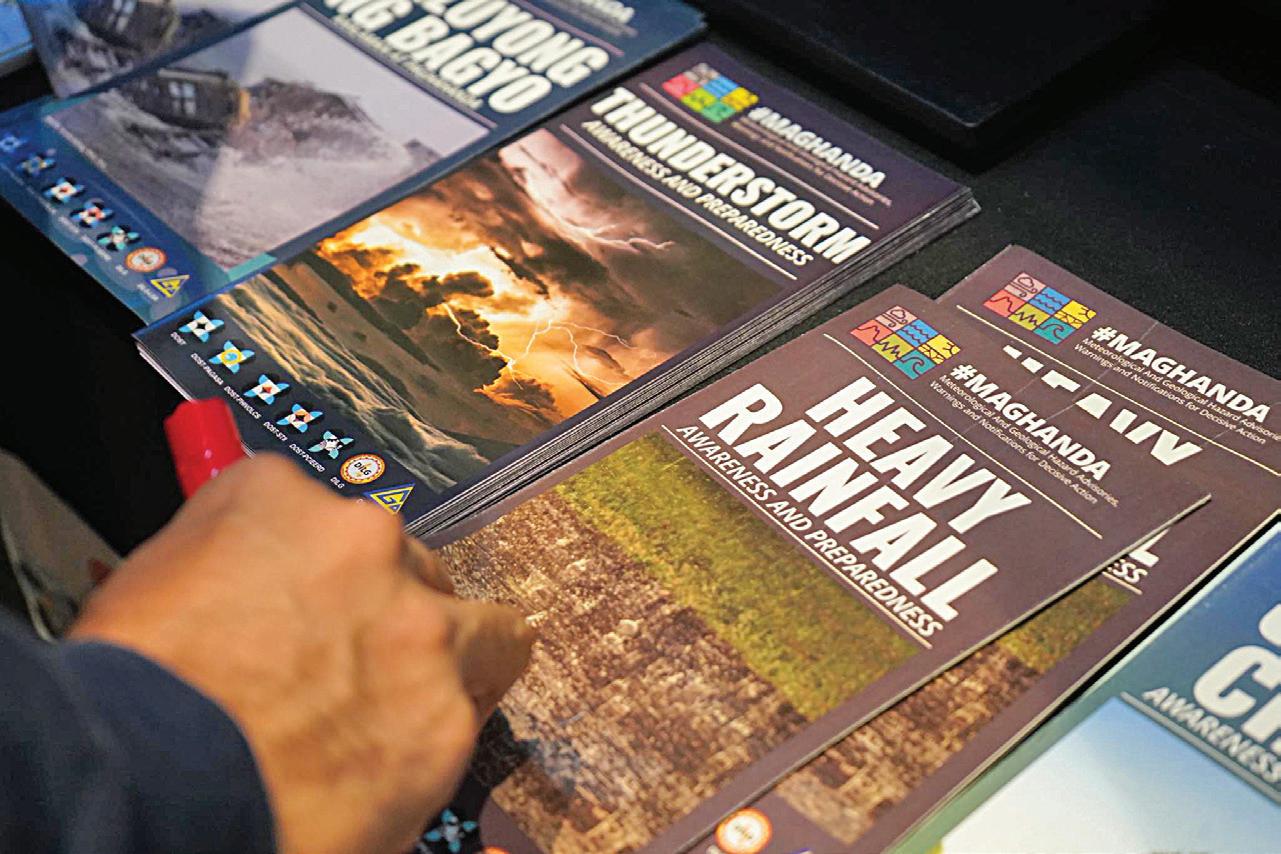
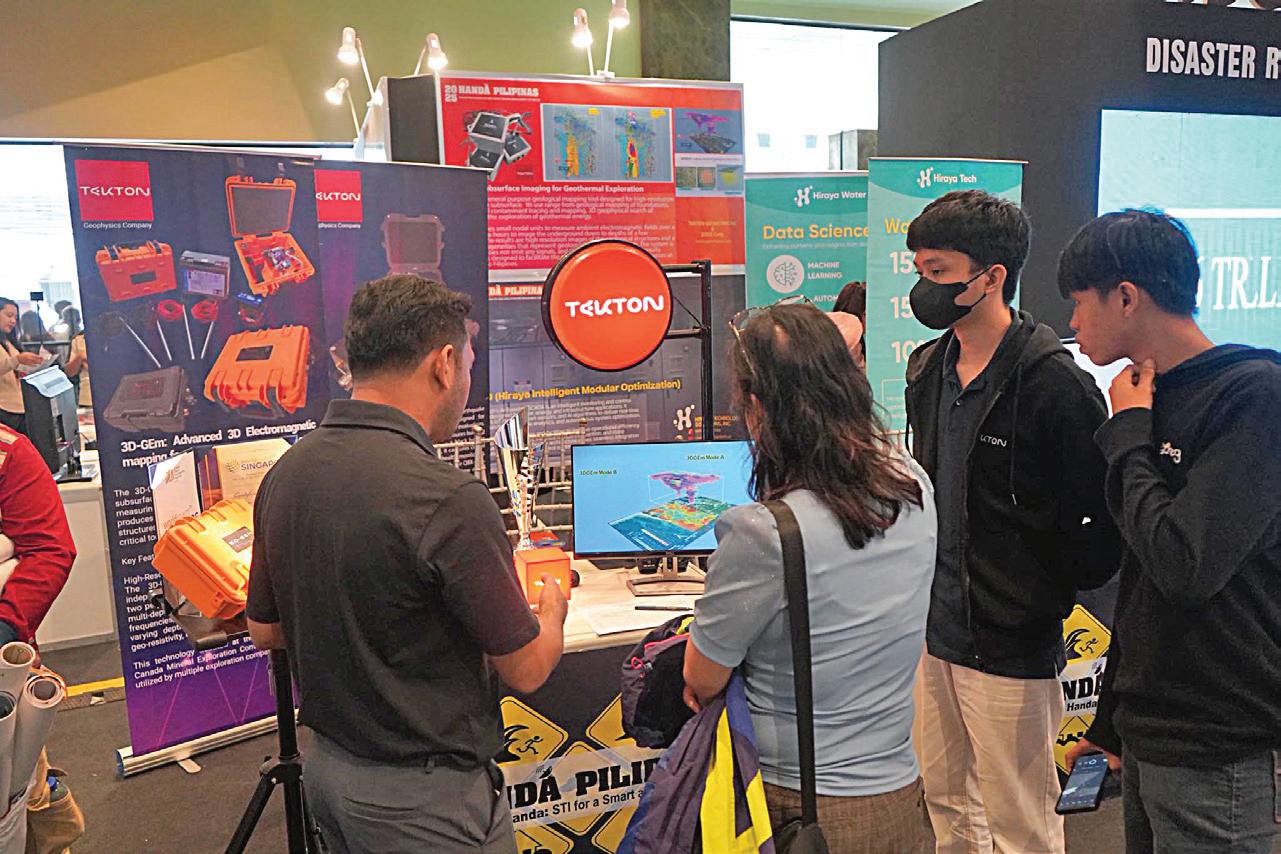
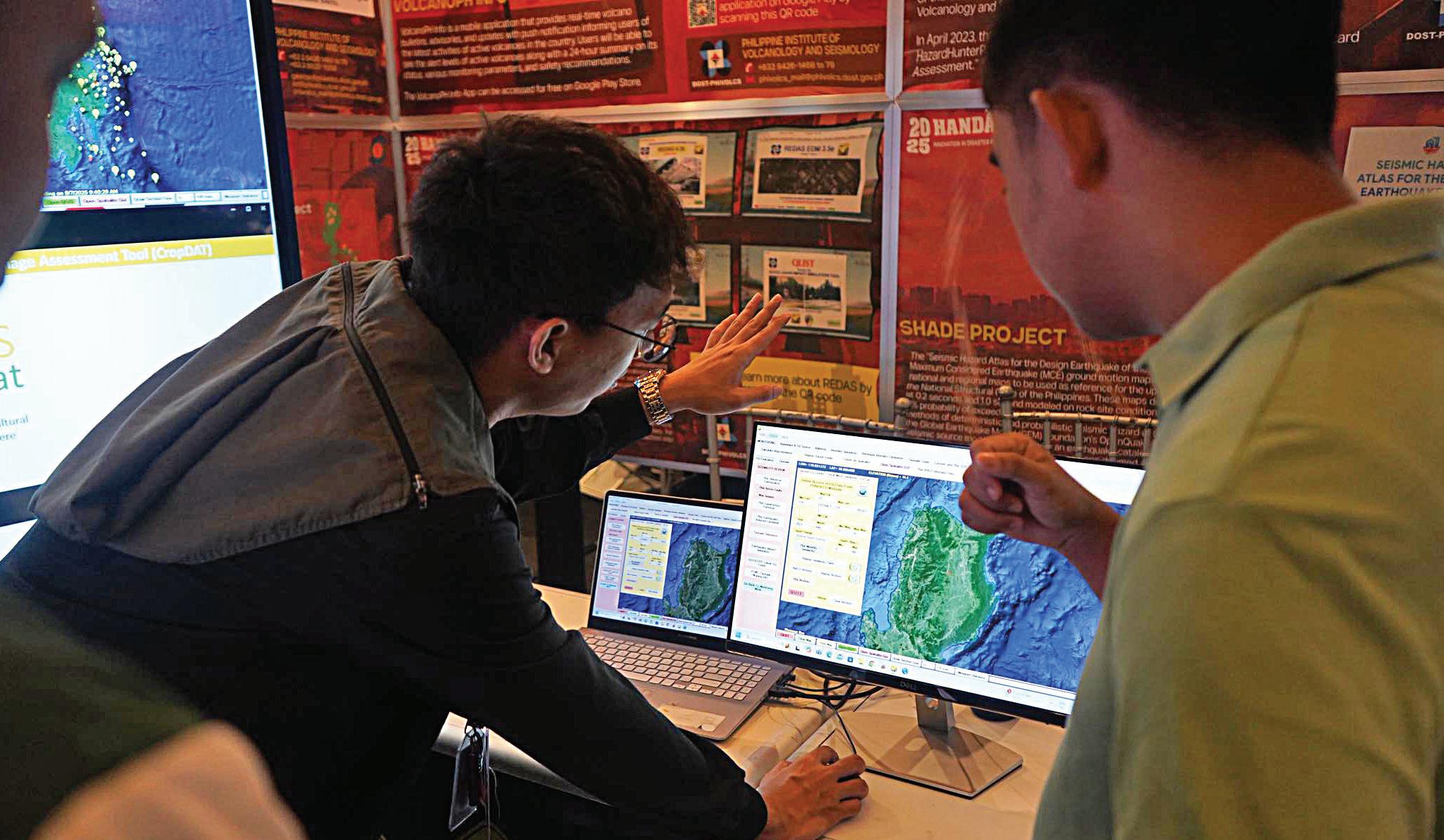

By contrast, a major typhoon that struck the country in 2025 resulted in 38 confirmed deaths and affected thousands of homes and infrastructure, with total estimated losses far lower than those recorded during Haiyan. While the 2025 typhoon still caused widespread flooding, landslides, and displaced over 270,000 people, the scale of destruction was considerably less.
At the regional level, the Cordillera Administrative Region (CAR) has also recorded notable improvements in disaster outcomes. Albert A. Mogol, regional director of the Office of Civil Defense–CAR and chair of the Cordillera RDRRMC, said casualty numbers and damage from disasters have been reduced in recent years.
He recalled that Typhoon Ompong (internationally known as Mangkhut) in 2018 claimed 116 lives in the region, while the 2025 southwest monsoon and subsequent storms again tested local preparedness.
However, he noted that landslide incidents have decreased as communities adopt technology-driven solutions and early warning systems.
“Before water reaches houses, residents are already pre-warned,” Mogol said. “Casualties have gone down and community resilience has improved through capacity building, technological innovations, and the early warning systems now in place.”
Solidum cautioned, however, that “preparedness is always relative,” explaining that as the population grows, so does the level of risk, since more people and infrastructure are exposed to hazards.
“Small earthquakes or storms aren’t the issue—it’s the large-scale or extreme events we must be prepared for,” he said, adding that urban areas, particularly Metro Manila, face higher risks due to dense populations and structures located in hazard-prone zones.
To address these challenges, Solidum said the Philippine Institute of Volcanology and Seismology (Phivolcs) continues to generate hazard data for urban areas and coastal communities vulnerable to tsunamis, particularly those facing the Pacific Ocean, West Philippine Sea, Sulu Sea, and Celebes Sea.

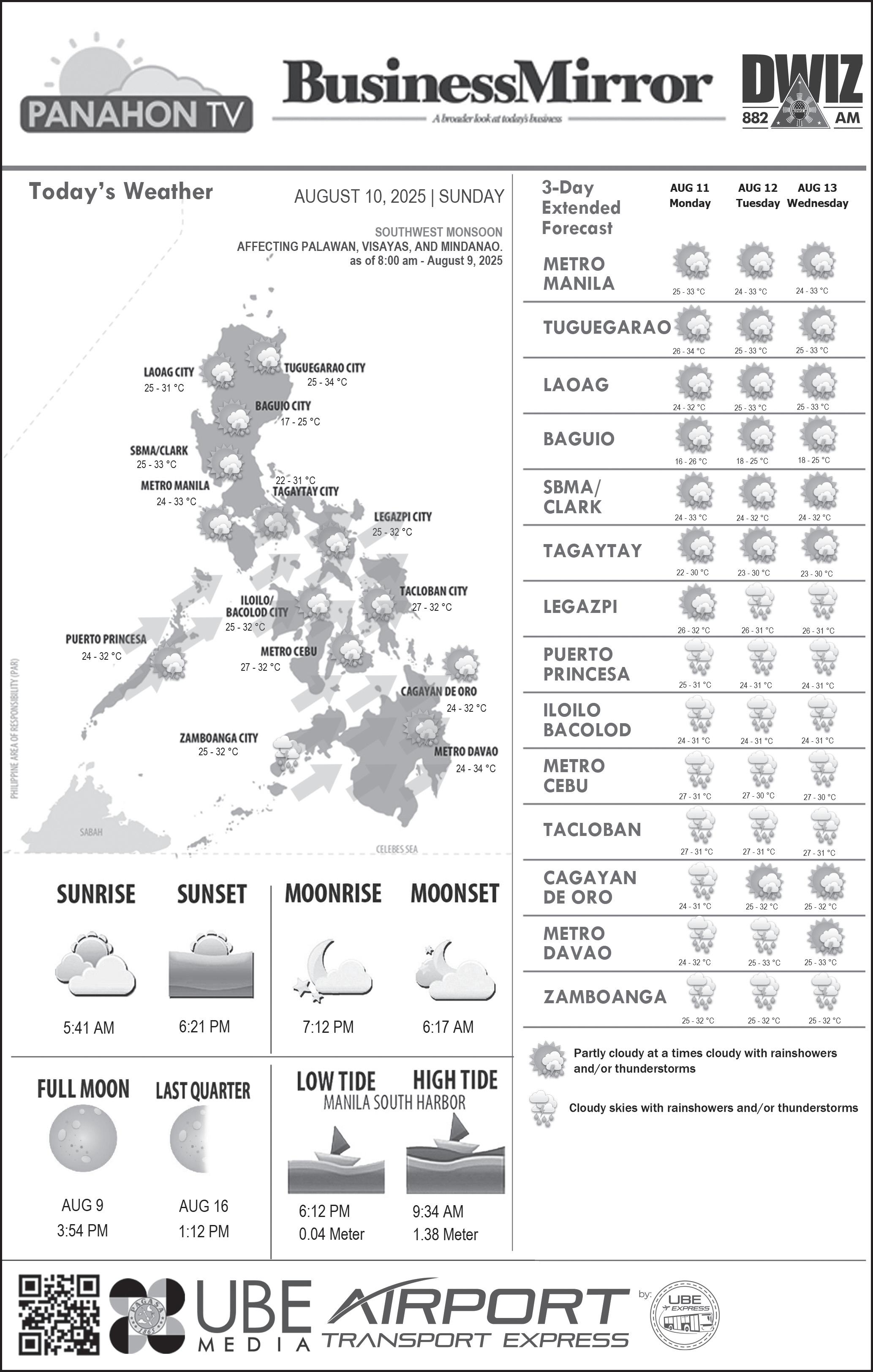
He emphasized the importance of sustained coordination with local government units.
“That’s why the HANDA Pilipinas campaign has evolved. It now includes modules for provinces, municipalities, and cities,” he said. Toolkits from the campaign have also been distributed to local governments interested in replicating disaster preparedness efforts.
Meanwhile, DOST Undersecretary for regional operations Sancho Mabborang reported that in 2024 alone, the department was able to train and capacitate nearly 2,000 individuals, including local government units (LGUs), first responders, researchers, teachers, and inventors under the HANDA Pilipinas program.
He noted that the initiative, previously held in the National Capital Region, has since expanded to other parts of the country— covering Luzon and the Visayas in 2024 and set to reach Mindanao following the current Luzon leg.
Mabborang explained that bringing the event to the local level improves accessibility, allowing more participants to attend without difficulty. The initiative has so far resulted in 223 memoranda of understanding and agreement with various stakeholders, enabling LGUs to adopt locally developed technologies from DOST or Filipino inventors.
“This is what matters—it’s not just talk. HANDA Pilipinas delivers concrete accomplishments,” Mabborang said, citing stronger engagements with LGUs, deployment of disaster preparedness technologies, and reduced disaster-related disruptions in participating communities.
‘Stronger, but not there yet’ DESPITE the progress, Solidum acknowledged that much remains to be done to scale up science and innovation solutions for disaster resilience, particularly in reaching high-risk and underserved communities.
“There are many things that need to be done,” Solidum told BusinessMirror
He emphasized that while there are effective solutions and products available, these need to be commercialized and scaled up. This priority, he added, is in line with President Ferdinand Marcos Jr.’s first directive following the amendment of the National Resilience Plan in 2023.
“That is my personal goal as well and the DOST’s goal is to make sure that the products or services must be scaled up to commercialization,” he said.
Solidum stressed that producing innovations “one piece at a time” will not be enough. To make a real impact, technologies must be manufactured at scale and for that, the science department is encouraging greater collaboration between technology developers and investors.
This is where the PROPEL (Promoting Research and Organizational Partnerships for Entrepreneurial Linkages) program comes in, he explained, as it facilitates interactions between innovators and capitalists to support the creation of manufacturing ventures.
Another crucial area, Solidum said, is strengthening partnerships with national agencies such as the Department of the Interior and Local Government (DILG) and the Office of Civil Defense (OCD).
He underscored the need to help local government units (LGUs) develop hazard-specific plans, noting: “I firmly believe that planning is the key.”
Once strategic planning is in place, he added innovations and scientific tools can be more effectively integrated into local governance.
Solidum also called for deeper engagement with higher education institutions, especially state universities and colleges, to serve as science advisers to LGUs.
“Disaster risk reduction is part of economic development,” he added. “Large-scale disasters can wipe out the economic development gains that any province would attain.”
He underscored that this is why, in DOST’s strategy, “creation of wealth must be in tandem with protection of wealth.” These bios (blended innovation and operations support) modalities are being implemented to accelerate the adoption of technologies.
Ultimately, Solidum said, whether related to disasters or not, the commercialization of products and services remains a top priority.
‘Preparedness starts with everyone’ IN his speech, Solidum stressed the need to “shift from responding to disasters to reducing risk, managing vulnerabilities, and increasing capacities,” noting that history
shows vulnerable communities bear the brunt of such events.
This shift, he explained, requires the involvement of all sectors such as government, nongovernment organizations, private industry, and the Filipino public at large.
“When we say ‘Bida ang HANDA,’ we mean that every Filipino has the capacity to act,” he said, adding that the DOST is committed to making sure science and technology go beyond laboratories and research papers, reaching and being understood by those who need them most—local DRRM councils, barangay officials, youth leaders, and the general public.
He cited DOST projects such as GeoRiskPH, a platform that provides hazard maps and allows local governments to integrate their own data; the Dynaslope Project, which installs landslide monitoring sensors in high-risk areas; and SARAI, which uses precision agriculture technologies to help farmers adapt to climate risks.
Other initiatives include the Lingkuranan sa Kagawasan wheelchair project for children with disabilities in disaster preparedness drills; the DANAS Project, which translates hazard information into over 30 local languages; the MoCCoV Project, a mobile emergency command unit; and the GRIND Program, which supports grassroots inventors in developing practical disaster solutions.
According to Solidum, these technologies and communitybased innovations aim to ensure that disaster resilience is built at all levels of society, with local governments, organizations, and residents actively participating in preparedness efforts.
“Our innovations serve as the frontline defenses, preventing, mitigating, and preparing for future risks, thereby safeguarding lives, livelihoods, and communities,” Solidum said.
However, the science chief said, “technology alone is not enough,” stressing the importance of empowering communities and recognizing that people are not merely recipients of solutions but also active drivers of innovation.
“When we invest in local capacity, we unlock innovation. When we empower our citizens with knowledge, they become not only recipients of solutions but creators of change,” he said.
Editor: Angel R. Calso

By Abhinav Ramnarayan, Silas Brown & Nicholas Comfort
AS NATO leaders huddled in The Hague in late June to iron out a plan to radically boost military spending, bankers in London were busy adding up the investor orders for a bond being offered by a little-known Czech maker of armored vehicles and ammunition.
The final tally: More than $10 billion for a sale that wasn’t even supposed to total $1 billion. Thrilled, they quickly doubled the size to more than $2 billion and slashed the interest rates they were offering. Just a few days earlier, the description “explosives maker” next to one Spanish company lining up to sell junk bonds caused a mini-frenzy. The company, Maxam Prill, markets itself as a supplier to the mining industry but investors locked in on the possible military uses for the devices as they piled into the $1.4 billion sale.
There are few investing booms in the world right now that are bigger than the rush to tap into Europe’s military buildup. And while the stock market, with its wild 100% and 200% rallies in defense companies, may get the headlines, it is the credit markets that will provide most of the cash that Europe’s manufacturers need to ramp up production and fulfill the trillions of euros worth of orders that pour in from governments for tanks, bombs and guns.
Even companies that are struggling and those that are only tangentially linked to the defense industry are attracting credit investors. The bonds of Eutelsat Communications SA, which fits both those descriptions, have soared in recent months due to the satellite company’s new strategic importance, removing it from the ranks of those deemed to be sinking into financial distress. And even companies that are far too small to tap the bond market—
a list that includes thousands of businesses across the continent— have scores of potential suitors in the private-credit market looking to cut them checks.
Everyone from blue-chip funds such as Carlyle Group Inc. and Ares Management Corp. to boutique shops like Pemberton Asset Management are seeking to lend more to defense companies. The sense in investing circles is that Europe’s leaders, shocked into action by President Donald Trump, are so determined to reduce their reliance on US might that the military buildup here will last for years, if not decades.
“This is going to be an irreversible trend,” Stefan Hoops, the chief executive officer of Deutsche Bank AG’s investment arm, DWS Group, said in a Bloomberg TV interview. The firm is “very focused” on stepping up financing to defense companies, Hoops said. “European countries are clearly committing to spend a lot more on defense, so this train has left the station.”
The excitement surrounding the sector, to be sure, may take some time to translate to private credit deals. Direct lenders typically take a while to deploy cash, particularly when venturing into new industries, and funds that were raised a few years ago may have environmental, social and governance restrictions around investing in some types of defense companies. One fund manager said he’d expect a meaningful increase in defense-related investments to take years—perhaps a couple—rather than months.
This explains, in part, why
demand has been so torrid for the bonds brought to market in recent weeks: They provide credit investors with an opportunity to tap into the defense trade now.
Czechoslovak, a supplier to Ukraine in its war against Russia, drew a whopping €5.6 billion ($6.5 billion) of demand for the euro tranche of its deal and $4.1 billion for the dollar tranche, according to a person familiar with the transaction.
It’s “a deal that would not have been possible two years ago,” said Daniel Rudnicki Schlumberger, head of leveraged finance for the EMEA region at JPMorgan Chase & Co., which was one of the banks that managed the sale. “The needs in defense are just huge,” he said in an interview on Bloomberg TV. A representative for Czechoslovak confirmed the high demand in the bond sale, without giving any further details.
The Prague-based company is now also considering an initial public offering, seeking a valuation of €30 billion or more, Bloomberg reported, citing people familiar with the matter.
Maxam, meanwhile, was asked repeatedly by investors about the military applications for its explosives while selling its notes, according to people familiar with the matter. A representative for Maxam said the company sold its defense business two years ago and that it marketed itself as a company exclusively dedicated to civil explosives when courting bond investors.
Last month, German radar maker Hensoldt AG tapped into the frenzy, too. It raised double its target amount of at least €150 million in a Schuldschein transaction after the deal was significantly oversubscribed.
But there are only so many European defense companies large enough to tap public bond markets, and thousands of small businesses that are key to supply chains. That’s why much of the financing will ultimately come from private-credit markets.
“Small companies need financing too and some of these are mom-andpop shops that will want to expand,” said Morningstar DBRS analyst Andrea Petroczi-Urban. “That’s why private credit can gain momentum
By Mark Chediak, Jennifer A Dlouhy & Ari Natter
PRESIDENT Donald Trump is escalating his attacks on wind and solar power from the rhetorical to the tangible, mounting a rapid-fire campaign that exceeds the industries’ worst fears. In just the past few weeks, the Trump administration instituted permitting reviews that threaten US wind and solar developments. It imposed standards that would essentially prevent new developments on federal land. It rescinded Biden-era decisions earmarking coastal waters for future wind turbines. And on Wednesday it yanked approval for a massive planned wind farm in Idaho. The pace and range of strikes against renewables—alongside several other actions that serve to prop up fossil fuels and nuclear power—have whipsawed wind and solar developers that had grown accustomed to federal support. The policies have already helped contribute to the cancellation or delay of more than $22 billion worth of clean energy projects since January and the loss of thousands of jobs, a majority in Republican states, according to an analysis from the E2 advocacy group.
The actions have struck deeper than even some hardened industry players and observers anticipated—mirroring Trump’s more aggressive approach on an array of fronts during his second term. Timothy Fox, managing director of ClearView Energy Partners, once believed the incoming administration might merely refocus government efforts to prioritize power from coal and gas instead of taking aim at renewables.
But that “refocus” path is now in the rearview. Instead, Fox said, “we’re in the retaliate scenario.”
Trump has repeatedly called green energy a “scam” while also touting his focus on “energy dominance” by relying on domestic sources of oil, natural gas and coal. Beyond the words, the actual crackdown on wind and solar comes at a precarious time in the US. Electricity demand is rising quickly because of data centers and climbing use of artificial intelligence, contributing to bigger bills for Americans still stung by broader inflation. Meantime, there’s a backlog in natural-gas turbines and new nuclear power is many years away. Some studies predict the attacks on renewables will shrink potential power generation and lead to higher energy costs.
Trump administration officials say the moves are justified to ensure the US has an abundance of always-on power sources. Previous presidents gave too much preferential treatment to wind and solar ventures, Interior Secretary Doug Burgum said in announcing one policy shift. “Leveling the playing field in permitting supports energy development that’s reliable, affordable and built to last,” Burgum said. The broadside against renewables began on Trump’s first day in office, when he froze offshore wind permitting. He’s moved to quickly reverse former President Joe Biden’s climate agenda and the Republican-majority Congress surprised even some GOP onlookers when it phased out tax incentives for wind and solar projects.
The White House did not respond to a request for comment.
The Transportation Department in July recommended a minimum set-back requirement for wind turbines that would require them to be, at a minimum, 1.2 miles (1.93 km) away from highways and railroads.
The agency also said the Federal Aviation Administration would “thoroughly evaluate” proposed turbines to ensure they do not pose
because they can sit down with direct lenders, which are more flexible than traditional banks.”
Historically, private-credit funds never paid much attention to the defense sector, with ESG considerations making it all the more complex for lenders to get involved. But attitudes and rules have been changing throughout financial markets, as Europe seeks to rearm itself, and several private lenders told Bloomberg that interest inside their firms has picked up markedly.
For some of the firms, so-called defense-adjacent companies are particularly attractive, given the way ESG rules still limit what they can invest in. Several leading lenders such as Ares and Blackstone Inc. see an increasing opportunity in areas like cybersecurity, defense-related software, electronic components and sensors, protective equipment and training solutions, people with knowledge of the matter said. Others such as Sixth Street have not yet reached a formal view about European defense but are spending time on it.
Taj Sidhu, head of European and Asian private credit at Carlyle, said he sees “compelling opportunities” in mid-market defense supply-chain companies, “where there is clear demand for the certainty of execution and flexibility that private credit solutions can provide.” Pemberton co-founder and managing partner
Symon Drake-Brockman said his firm has also seen increased demand for investment in defense and defense-linked companies, and he anticipates long-term growth for the sector.
Spokespeople for Ares and Blackstone said they had nothing further to add to their public comments on defense, while Sixth Street did not respond to a request for comment.
The overall potential in the sector is huge, with Carlyle estimating European spending of as much as €14 trillion on defense and related infrastructure over the next decade after NATO members raised spending targets to the equivalent of 5% of gross domestic product. And governments are also pushing for private lenders to get involved: A White Paper from the European Commission earlier this year included suggestions for mobilizing private money to fund the continent’s rearmament.
Among the few funds already launched is a new vehicle from Tikehau Capital SCA, along with three insurers, which is focused on defense, cybersecurity and European security. The fund, with an initial commitment of €150 million, is similar to a previous Tikehau private equity fund dedicated to aerospace and defense, but includes a 30% allocation to private debt, according to Raphael Thuin,
head of capital market strategies at the French asset manager. As others follow, they’ll need to figure out how to make the most of newfound interest from clients—and put in the legwork to vet obscure companies that have often never tapped public or private debt markets before. Risks abound. “While the current geopolitical situation is driving a re-assessment of the defense sector, ESG risks and socio-economic impacts are material for investors,” Nikolaj Halkjaer Pedersen, a senior researcher at Principles for Responsible Investment, wrote recently. The Alternative Credit Council, which lobbies for private credit firms, is trying to bridge that gap between lenders and small defense firms in Europe. “Links between private credit and defense are more established in the US,” said Jiří Król, global head of the ACC. So he and his team are working with industry groups, he said, “to give private credit firms a better understanding of the needs and specificities of defense companies.”
Hoops, the CEO at DWS, said it’s only a matter of time before those smaller companies need capital. “As the number of orders for the big companies go up,” he said, “all of the smaller, non-publicly traded companies also need to increase capacity.” With assistance from Rose Henderson and Anna Edwards / Bloomberg
a danger to aviation. Concerns about turbines interfering with military flights have cropped up in previous administrations’ evaluations of offshore wind leasing.
The Environmental Protection Agency, meanwhile, has proposed rescinding the endangerment finding, a determination that greenhouse gases harm public health and welfare, indicating the lengths it will go to in order to prop up fossil fuels at the expense of solar and wind.
Billions of dollars’ worth of new factories and clean energy projects have been canceled, delayed or scaled back since the start of the year, with $11.7 billion of investments located in GOP districts as of June, according to E2. More than 16,500 jobs have been lost, with nearly 12,000 of them in Republican districts, the analysis finds.
The industry had expected a slowdown, including a leasing pause on federal land and that newly proposed projects wouldn’t proceed, an energy company executive told Bloomberg earlier this year. But the scale of disruption, especially moves against fully permitted wind projects, took developers aback, said the executive who asked not to be named in order to speak more candidly.
For some businesses, the best strategy is to keep your head down and hope projects can wait out the next three and a half years, another energy industry executive told Bloomberg. Even so, the executive added, that keeps capital locked up and forfeits opportunities for other investment in the meantime.
“The proposed federal interference with private economic activity is unprecedented,” said the American Clean Power Association, a trade group for utility-scale wind and solar developers. The policies have created “a troubling challenge for critical infrastructure investment of any kind.” Bloomberg News

Sunday, August 10, 2025
By SAMYA KULLAB The Associated Press
KYIV, Ukraine — Ukrainian
President Volodymyr Zelenskyy quickly reversed course last month on a law that would have curbed the independence of the country’s anticorruption watchdogs after widespread protests that threatened the stability of his leadership for the first time since Russia’s invasion.
It’s unlikely that the damage to the president’s image can be changed as easily.
Zelenskyy’s reversal followed years of public discontent that simmered around his inner circle, some of whom have been accused of corruption. But Ukrainians have been largely deferential toward their president in wartime, trusting him to lead the fight against the Kremlin and even acquiescing in the suspension of some civil liberties.
The protests showed the limits of that goodwill after the public concluded that Zelenskyy’s fasttracking of the law was a step too far.
“People will support Zelenskyy in whatever he does as it relates to the war. But the previous level of trust “that he will carry out everything correctly, without outside interests, has been damaged,” said Tetiana Shevchuk, a board member of the Ukrainian nonprofit AntiCorruption Action Center, which fights graft. Zelenskyy “will need to work hard to get it back.”
A Gallup poll released Thursday found that about two-thirds of Ukrainians approve of the way Zelenskyy is handling his job as president, down from 84% in 2022. Another poll released Wednesday by the Kyiv International Institute of
Sociology found a similar pattern, with trust in Zelenskyy down from just before the war started and a sharp decrease since after the signing of the law.
Both polls were conducted in July and excluded adults living in regions of the country that were not controlled by Ukraine or were under entrenched Russian control.
The initial decision to sign the proposal hurt Zelenskyy’s standing among Ukrainians, loyal lawmakers and Western allies, including one foreign minister who told The Associated Press that his willingness to backtrack on the law would help restore “lost trust.”
Zelenskyy says bill was designed to root out Russian influence ZELENSKYY sparked the outcry when he signed measures to reduce the powers of the National AntiCorruption Bureau, or NABU, and the Specialized Anti-Corruption Prosecutor’s Office, or SAPO.
Zelenskyy said the initial bill was meant to root out Russian influence in those agencies, but he did not provide evidence to support the claim. The bill became a law so quickly that lawmakers said they barely had time to read it. For the Ukrainian people,
patience wore thin.
From the outset of Russia’s fullscale invasion in 2022, the public tolerated restrictions such as martial law and postponed elections. But critics also argued that the consolidation of the president’s authority undermined the country’s democratic institutions, along with the checks and balances necessary for transparency. Members of Zelenskyy’s inner circle and the corruption allegations fueled public resentment.
The resulting anti-corruption protests in July in Kyiv and other cities were among the largest in years, drawing thousands of demonstrators and reflecting widespread public demand for transparency and accountability even during wartime.
“It’s not one law that brought people to the streets, but a series of events and mostly an accumulation of feelings and wanting to show the government there are certain red lines,” Shevchuk said.
Ukrainian leaders have been sensitive to public opinion ever since the Euromaidan protests of 2013 and 2014, which ignited extraordinary political changes, including the ousting of pro-Russia President Viktor Yanukovych. Those protests marked a decisive moment in Ukraine’s history and galvanized public intolerance toward corruption and abuse of power.
Until recently, Zelenskyy’s decisions and public statements aligned mostly with public opinion. He watches polls closely. For instance, he did not say that Ukraine would be unable to win back occupied territory militarily until polls showed that Ukrainians were willing to end the war for territorial concessions.
Many of the suspicions about Zelenskyy’s inner circle focused on the head of his presidential office, Andriy Yermak, who is seen as having too much power, according to activists and Ukrainian and Western officials. In recent weeks, two other individuals close to Zel-
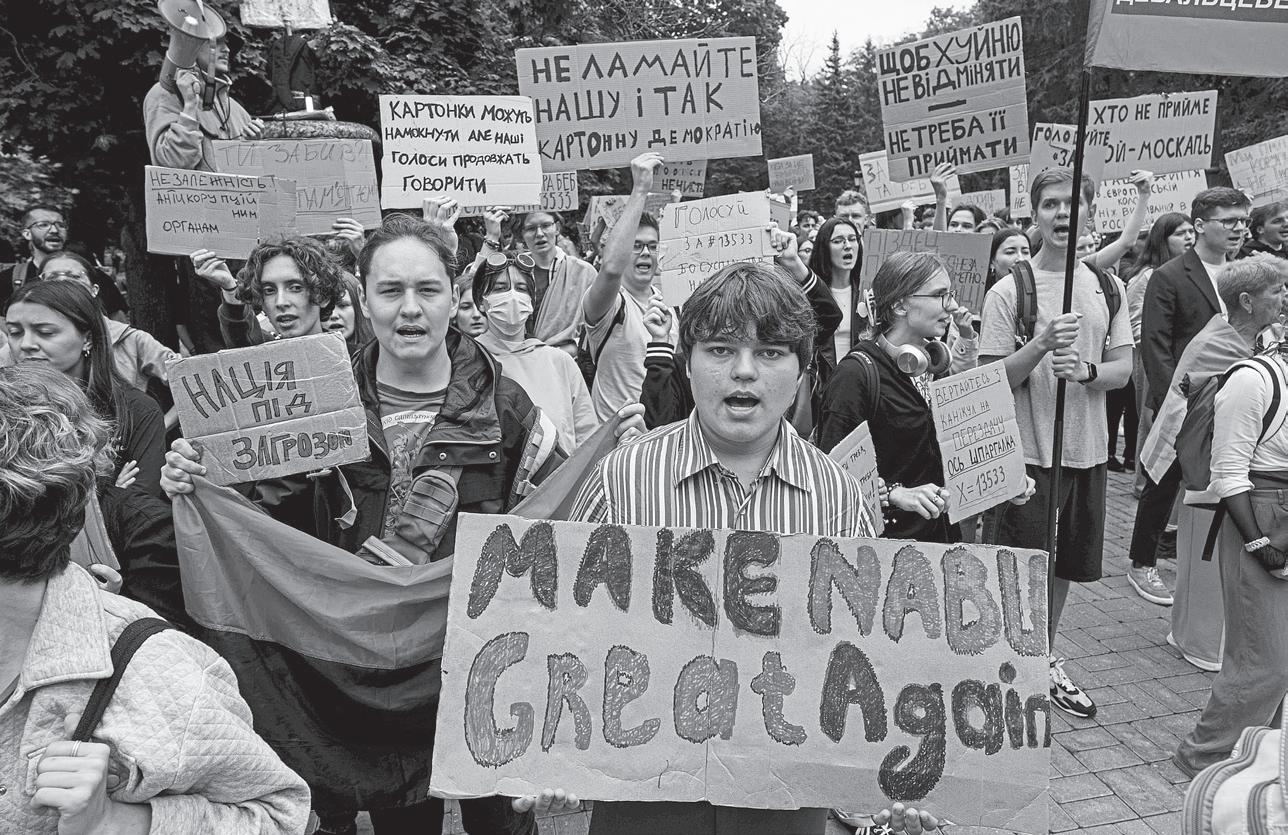
enskyy sparked public ire ahead of the protests.
The first was former Ukrainian Deputy Prime Minister Oleksii Chernyshov, a close ally of Zelenskyy’s, who in June was formally named a suspect in a high-profile land-grab case. Later, the NABU announced that he was the sixth suspect in a large corruption scheme led by a Kyiv property developer.
The other individual is Tymur Mindich, a close friend of Zelenskyy’s. Ukrainian news outlet Ukrainska Pravda reported that the NABU and the SAPO were in the process of issuing a formal notice of suspicion against the businessman, who is involved in drone production.
“Ukrainians are united around the president in his war efforts, in his efforts to gain support from allies right now and the necessary military aid,” Shevchuk said. “But at the same time, people know what is happening with the close allies of the president, the allegations of corruption, so this does not go unnoticed.”
The protests “were a reminder to the president from the people basically saying, ‘We see everything, remember everything. And we don’t want the president to use his power to protect corruption,’” she added.
Lawmakers will no longer blindly accept laws backed by Zelenskyy
LAWMAKERS who speedily passed the first law limiting the NABU and the SAPO said the backlash undercut the blind trust in bills backed by Zelenskyy. Bills supported by him were once passed with little objection, with few exceptions.
“I voted not because I agreed with the law, but because it was the president’s decision,” said lawmaker Oleksandr Merezhko, a member of Zelenskyy’s party. “I had no time to read it, but I understood what was at risk, and I voted like other people because we trusted the president. It was his decision, and we are team players.”
Zelenskyy himself conceded that communication about the law had been lacking.
“Probably there should have been a dialogue. Communication is always necessary,” he told reporters on July 24.
The firm faith in Zelenskyy led one lawmaker to joke that if the president nominated a spoon for prime minister, Parliament would likely vote in favor. But that sentiment has changed, Merezhko said, with parliament now becoming more independent.
“Now members of parliament will be more careful,” he said. “If
before we had a presumption of trust with respect to the president or cabinet of the bills, we now have a presumption of mistrust. If similar bills are introduced,” members of parliament “will remember what happened. They don’t want to be framed or blamed for what happened.”
But lawmakers commended Zelenskyy for acting swiftly to reverse his decision and quiet the anger on the street. Last week, parliament passed another bill restoring the independence of the NABU and the SAPO.
“People asked for changes. We responded,” Zelenskyy told reporters. Law also raised doubts in the West THE proposed law also drew concern among Ukraine’s European allies, who suggested it could imperil support for Kyiv and affect Ukraine’s bid to join the EU. Ukraine’s closest allies welcomed the swift turnaround.
British Prime Minister Keir Starmer raised the issue in a July 24 call with Zelenskyy. A readout of the call from Starmer’s office said the leaders “agreed on the importance of the role of independent anti-corruption institutions at the heart of Ukraine’s democracy.”
In Germany, Foreign Minister Johann Wadephul expressed dismay when Zelenskyy approved the measures to reduce the powers of the NABU and the SAPO. When Zelenskyy reversed course, Wadephul wrote on X that the Ukrainian parliament’s vote “was a positive and necessary step toward regaining lost trust.”
Meanwhile, US President Donald Trump, who often weighs in on matters in foreign countries, including their domestic affairs, has been silent about the Ukrainian corruption law.
The Associated Press writers Michelle Price and Amelia ThomsonDeVeaux in Washington contributed to this report.
By David A. Lieb & Jonathan J. Cooper
The Associated Press
AFTER leaving Texas for Illinois to prevent a legislative vote on a Republican redistricting plan, state House Democratic leader Gene Wu needed a means to project his voice—and viewpoints—to a national audience. So, he tapped his campaign account to buy a microphone for news conferences.
When it came to covering the hefty hotel bill for Wu and his roughly 50 colleagues, the lawmaker said he relied on money from his chamber’s Democratic Caucus.
Now Texas Democrats are pleading for donations to help finance what could be a walkout of weeks—if not months—in a highstakes attempt to prevent the Republican majority from passing a plan sought by President Donald
Trump. The president is urging Texas and other GOP-controlled states to redraw their congressional districts to help Republicans maintain control of the US House in next year’s midterm elections.
“We’re getting a lot of smalldollar donations,” Wu told The Associated Press, “and that’s going to be used to help keep this thing going.”
A political group led by Beto O’Rourke, a former Texas congressman who ran unsuccessfully for governor and Senate, gave money to the Texas House Democratic Caucus to help cover the up-front costs, according to a spokesperson for the group, Powered by People. O’Rourke this week has been holding events in red states to fire up Democrats and encourage donations.
Powered by People has not disclosed how much it contributed.
Texas Attorney General Ken Pax -

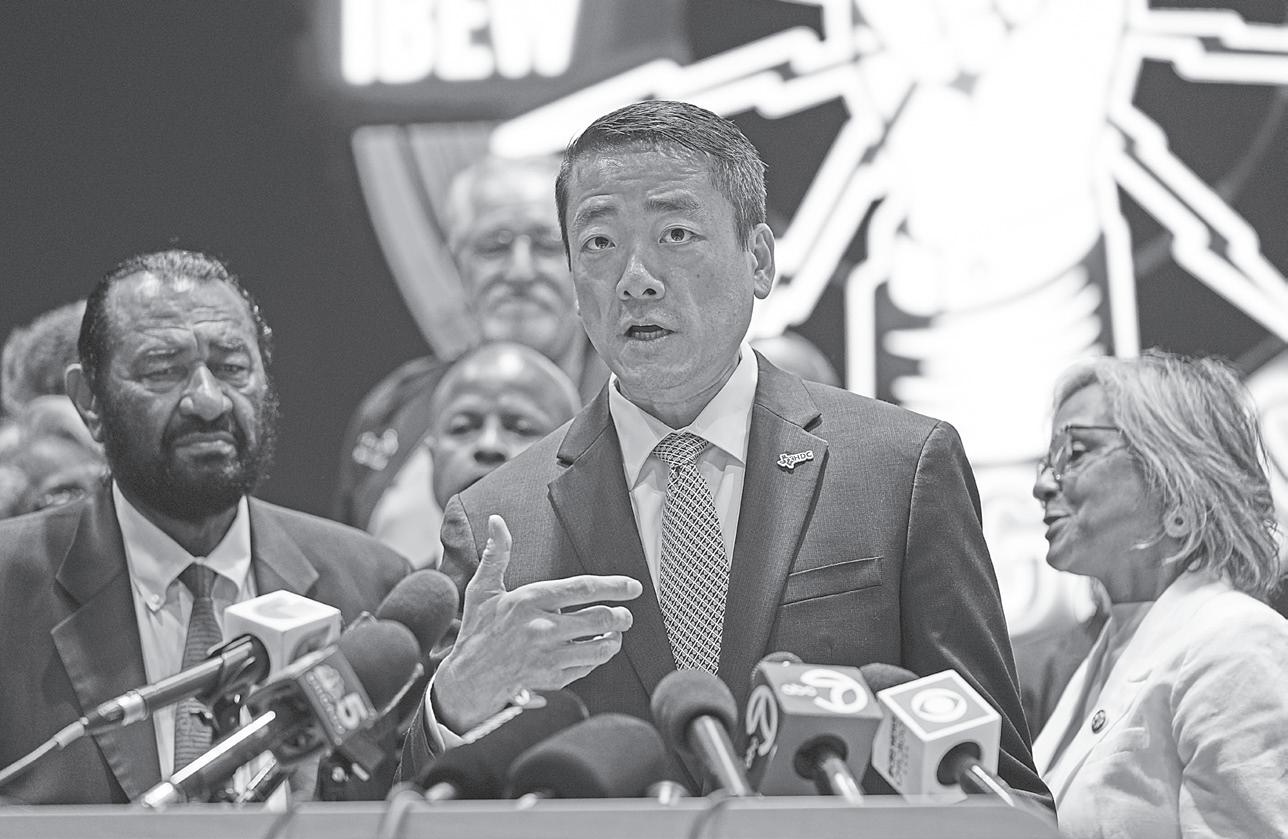
ton, a Republican, said Wednesday he’s launching an investigation into whether O’Rourke’s group has committed bribery by a “financial influence scheme” benefiting Democrats who left Texas.
In response, O’Rourke said he would be undeterred by the threat of an investigation and used it as a fundraising opportunity.
Lawmakers face travel costs and potentially huge fines BY departing the state, Democratic lawmakers have prevented Republicans from obtaining the quorum needed to conduct business. Democrats hope to run out the clock on a special legislative session that ends Aug. 19. But Republican Gov. Greg Abbott could immediately call another session, raising the prospect of a prolonged and an expensive holdout.
Not only could Texas Democrats face thousands of dollars in outof-state lodging and dining costs, they also could eventually face fines of $500 for each day they are
absent, which under House rules cannot be paid from their office budgets or political contributions.
Texas has a part-time Legislature where lawmakers receive $600 a month, plus an additional $221 for expenses each day they are in session.
On Wednesday, state Sen. Jose Menendez joined Democrats from other states at a rally in Boston, where he noted that the potential daily fine for quorum-breaking lawmakers is nearly as large as their entire monthly legislative salary.
“They need your prayers, they need your thoughts and they need you to get behind them,” he said.
Some Democrats in the Texas Senate have traveled out of state this week to support their House colleagues, but lawmakers in that chamber are not leaving the state to hold up legislative business.
‘This fight is for the people’ ILLINOIS Gov. JB Pritzker, a Democrat and billionaire, has
welcomed the Texas lawmakers to his state but said he has not financially supported them. Texas state Rep. James Talarico, who has built a national following in recent weeks, said the lawmakers told Pritzker they didn’t want him to fund their trip.
“We’ve already been inundated with donations from across the state of Texas, from across the country, just regular people donating $5, $10, $15,” Talarico said this week. “And that’s appropriate, because this fight is for the people and it should be funded by the people. We don’t have billionaires who are funding this operation.”
The House Democratic Caucus has set up a website seeking donations of between $25 and $2,500— with a default amount of $250.
Earlier this week, Abbott asked the state’s highest court to remove Wu from office and ordered the Texas Rangers to investigate possible bribery charges related to how Democrats are paying for the walkout, alleging anyone who financially helped them could be culpable.
Wu, a former prosecutor from Houston, said the bribery suggestion is “monstrously stupid.”
“No member is leaving because they might get a campaign contribution that might restore some of the money that they’re spending,” he said.
Wu, who is chair of the Texas House Democratic Caucus, said he has participated in online sessions with representatives of dozens of Democratic, progressive and redistricting-oriented groups. Not all are financial supporters. Some are providing help in other ways, such as by coordinating publicity. The Democratic National Committee has helped with communications and organizing, as well as providing help from a data analytics team, Chair Ken Martin said.
Texas Democrats aren’t worried that they’ll be forced to return home in the near future because of a lack of money, said Luke Warford, founder of Agave Democratic Infrastructure Fund, a Texas fundraising and organizing group. He said longtime Democratic funders understand the high cost of competing in tougher US House races if Republicans succeed in redrawing the map.
“Of course, having most of the delegation out of the state is going to rack up a bill,” Warford said. But “when you think about it in the context of what Donald Trump has to gain and what Democrats might lose in the short term, it’s just not even close to the cost of trying to win back either these races or a bunch of other races in the country.”
The Associated Press writers Joey
How left-leaning groups are helping BEFORE Democrats decided to leave Texas, Wu said he called potential allies for assurance “that there would be resources that would come to our assistance.” But he said that’s no different from an aspiring candidate asking others for support before officially launching a campaign.

By John Eiron R. Francisco
BAGUIO CITY—The Department of Science and Technology (DOST) is setting its sights on transforming every town and city in the Philippines into a “smart and sustainable” community, harnessing technology, innovation, and resource management to boost local governance and safeguard the environment for future generations.
“Ultimately, our dream for all towns and cities in the Philippines is to be smart and sustainable,” Science Secretary Renato U. Solidum Jr., told the BusinessMirror on the sidelines of the Regional Science, Technology, and Innovation Week in this city.
Solidum explained that being “smart” involves the use of technology to enhance governance, beginning with addressing the specific needs identified by local chief executives.
He said the DOST will also assist in crafting roadmaps to guide towns and cities toward achieving
‘One Health for All’ focus of natl health research week in Bicol
THE Philippine National Health Research System (PNHRS) Week will be held on August 13 to 15 in Legazpi City, Albay to advance inclusive, transdisciplinary solutions addressing the interconnected challenges of human, animal, and environmental health.
With the theme “One Health for All: Igniting Transdisciplinary Solutions for a Healthier Philippines,” it will gather over 500 health researchers, policymakers, and stakeholders from across the country.
Hosted by the Bicol Consortium for Health Research and Development (BCHRD) in partnership with the Department of Science and Technology’s Philippine Council for Health Research and Development (DOSTPCHRD), the 18th PNHRS Week will serve as a national convergence point for regional research consortia, academic institutions, government agencies, and civil society organizations championing health equity through science and innovation.
The celebration will spotlight the urgent need for collaborative frameworks that break down silos between disciplines and sectors to deliver holistic, evidencebased responses to public health threats.
The three-day event will feature plenary sessions, research competitions, policy dialogues, and technical committee meetings that reflect the System’s priority to bridge research, policy, and practice in line with the National Unified Health Research Agenda.
The highlights of the celebration are:
Talakayang HeaRT Beat Press Conference: Kicking off the celebration, the Talakayang HeaRT Beat press conference will feature key persons from the four core implementing agencies of PNHRS to provide
smart and sustainable status.
A “sustainable” community, he noted, is one that manages its resources in a way that allows future generations to continue benefiting from them.
This includes sourcing goods locally, practicing efficient resource management, and adopting a circular economy framework—where waste is properly managed and repurposed into products that can generate income.
“Most often, many cities would just vie to be smart, meaning digital, internet-intensive technology,” Solidum added.
He explained that while the department is working toward interconnecting towns and cities, there are smart technologies that can be implemented without relying heavily on connectivity.
These innovations, he said, can be applied across various sectors such as agriculture, aquaculture, mobility, and governance.
As part of the smart and sustainable initiative, he emphasized the need to also prioritize environmental management.
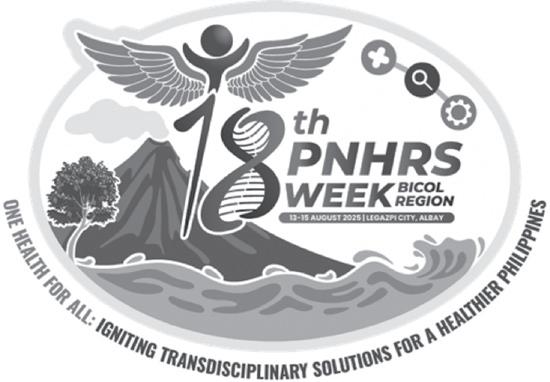
insights into the activities of the three-day celebration.
Plenary Session 1: Homegrown Inter-agency Initiatives towards Optimal Collaborations
THE opening plenary will highlight successful multiagency health projects developed and scaled across the country, focusing on local solutions with national impact.
Research Competitions and Exhibits: Students and professionals from across the country will present their research through oral and poster sessions, while the 3-Minute Pitch to Policy-makers will challenge researchers to distill key findings into compelling, policy-ready messages. Committee and Business Meetings: Converging the national Technical Working Committees on Research Utilization, Research Agenda Management, and others, the sessions aim to refine implementation strategies of the PNHRS Strategic Plan and national research priorities.
Plenary Session 2: Innovation, Education, and Governance Integration in One Health
THE final plenary will explore how aligning innovations, academic initiatives, and governance mechanisms can lead to more sustainable and inclusive health systems under the One Health framework.
Celebrated annually every second week of August under Presidential Proclamation 1309, the PNHRS Week affirms the country’s longterm vision of a responsive, inclusive, and collaborative national health research system that works for every Filipino.

Citing the impact of continuous rains—not only in Metro Manila but also in other towns—Solidum noted that flooding has repeatedly disrupted the operations of both the private sector and government offices.
To address this, he underscored the importance of community involvement, envisioning
the application of smart technologies to foster open, data-driven collaboration among the public sector, private businesses, and local communities.
“[With] citizen-centric and digitally transformed governance, we can start with small things and build upon it,” Solidum said.
Cauayan City in Isabela,
declared the country’s first smart city by the DOST in 2015, serves as a model for the program.
Solidum said Cauayan has implemented not only information, communication and technology solutions, but also a semi-automated materials recycling facility developed by a local inventor. The facility allows the city to eliminate the use of landfills and generate income from waste, with pyrolysis as an option for those unable to afford the technology.
“So Cauyan is a standard that we’re now looking at, but they still need to be improved,” Solidum said.
The DOST currently has 93 pilot areas nationwide, up from the initial 80 when the program began.
“Many would want to join. We can’t do it all at once. But we hope that the pilot [areas] will now connect with the surrounding towns and cities for them to also help,” Solidum said.
Four pilot areas are located in Metro Manila—Quezon City, Caloocan, Pasig, and Muntinlupa.
DOST sees ‘missing link’ in drive to spark grassroots innovation
Story &
photo by John Eiron R. Francisco
STABLISHING Innovation
EHubs (IHubs) across provinces is the “missing link” to drive grassroots innovation, the Science chief said, noting that most current interventions focus on established businesses, university incubators, and funded startups—leaving untapped potential at the community level.
Secretary Renato U. Solidum Jr. of the Department of Science and Technology told reporters during the launching of the DOST-PTSO Baguio-Benguet Innovation Hub (iHub) on Friday that the program aims to bridge the gap by nurturing ideas that could grow into viable enterprises.
“This is the missing link that I think is needed,” Solidum said, explaining that while DOST programs often start from established businesses or incubators, “the idea is lacking” at the grassroots level.
He noted that many potential enterprises can be developed from innovative concepts, even from students fresh out of universities.
Since many IHubs are located
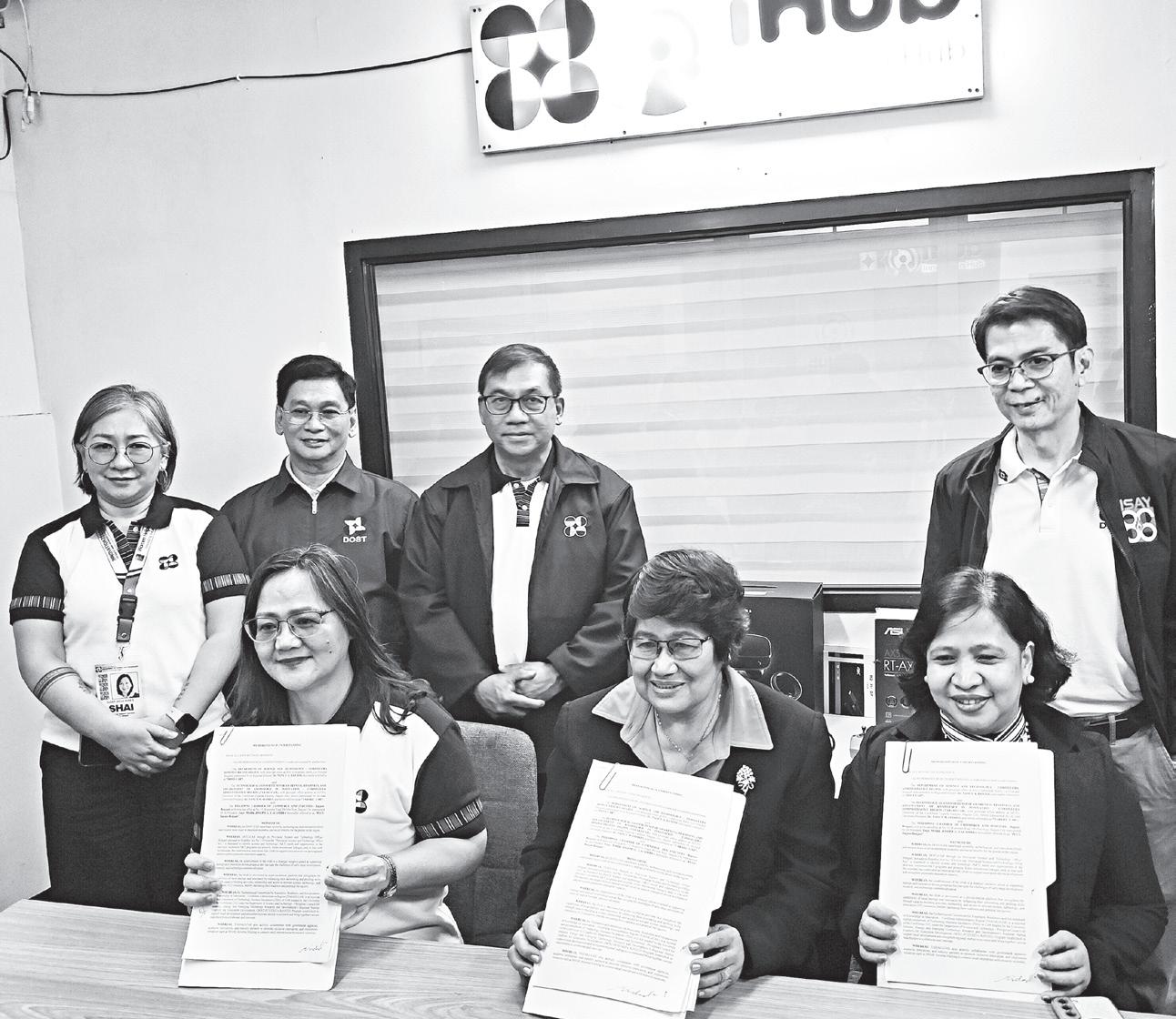
within academic institutions, partnerships will primarily involve students, whom Solidum described as “having a lot of ideas.”
He added that some hubs already work with scholars from the Science Education Institute, who now undergo entre -
preneurial training.
Proposals for partnerships, especially with universities, will be considered. Ventures that are already operational may qualify for the department’s Small Enterprise Technology Upgrading Program, which currently requires three years in business—a requirement DOST is considering lowering to two years to widen eligibility.
”In essence, we’re building the ecosystem, the facilities that will cater to the idea and actual conversion of the idea into reality, while establishing facilities that will help specific sectors of society,” he explained.
He emphasized that the IHubs are meant to serve local communities, with the success of the program ultimately depending on the active participation of residents.
“This is really an innovation hub that will start from below,” he said. “We hope this will be maximized by the people of Baguio City and La Trinidad, because this is being established for you, not for DOST.”
“When I became Secretary, I ordered that they be given entrepreneurial training,” he said. “Our scholars, those interested, have already established possible companies because they’ve graduated from training. So they have the option to be employees or employers.” On funding, Solidum said there are currently no grants for the initiative, as it is still in the idea stage.
New study sheds light on ChatGPT’s alarming interactions with teens
By Matt O’brien & Barbara Ortutay
CHATGPT will tell 13-year-olds how to get drunk and high, instruct them on how to conceal eating disorders and even compose a heartbreaking suicide letter to their parents if asked, according to new research from a watchdog group.
The Associated Press (AP) reviewed more than three hours of interactions between ChatGPT and researchers posing as vulnerable teens.
The chatbot typically provided warnings against risky activity but went on to deliver startlingly detailed and personalized plans for drug use, calorie-restricted diets or self-injury.
The researchers at the Center for Countering Digital Hate also repeated their inquiries on a large scale, classifying more than half of ChatGPT’s 1,200 responses as dangerous.
“We wanted to test the guardrails,” said Imran Ahmed, the group’s CEO. “The visceral initial response is, ‘Oh my Lord, there are no guardrails.’ The rails are completely ineffective. They’re barely there—if anything, a fig leaf.”
OpenAI, the maker of ChatGPT, said after viewing the report on Tuesday that its work is ongoing in refining how the chatbot can “identify and respond appropriately in sensitive situations.”
“Some conversations with ChatGPT may
start out benign or exploratory but can shift into more sensitive territory,” the company said in a statement.
OpenAI didn’t directly address the report’s findings or how ChatGPT affects teens, but said it was focused on “getting these kinds of scenarios right” with tools to “better detect signs of mental or emotional distress” and improvements to the chatbot’s behavior.
The study published on Wednesday comes as more people—adults as well as children—are turning to artificial intelligence (AI) chatbots for information, ideas and companionship.
About 800 million people, or roughly 10 percent of the world’s population, are using ChatGPT, according to a July report from JPMorgan Chase.
“It’s a technology that has the potential to enable enormous leaps in productivity and human understanding,” Ahmed said. “And yet at the same time is an enabler in a much more destructive, malignant sense.”
Ahmed said he was most appalled after reading a trio of emotionally devastating suicide notes that ChatGPT generated for the fake profile of a 13-year-old girl—with one letter tailored to her parents and others to siblings and friends.
“I started crying,” he said in an interview.
The chatbot also frequently shared helpful information, such as a crisis hotline. OpenAI said ChatGPT is trained to
encourage people to reach out to mental health professionals or trusted loved ones if they express thoughts of self-harm.
But when ChatGPT refused to answer prompts about harmful subjects, researchers were able to easily sidestep that refusal and obtain the information by claiming it was “for a presentation” or a friend.
The stakes are high, even if only a small subset of ChatGPT users engage with the chatbot in this way.
In the US, more than 70 percent of teens are turning to AI chatbots for companionship and half use AI companions regularly, according to a recent study from Common Sense Media, a group that studies and advocates for using digital media sensibly.
It’s a phenomenon that OpenAI has acknowledged. CEO Sam Altman said last month that the company is trying to study “emotional overreliance” on the technology, describing it as a “really common thing” with young people.
“People rely on ChatGPT too much,” Altman said at a conference. “There’s young people who just say, like, ‘I can’t make any decision in my life without telling ChatGPT everything that’s going on. It knows me. It knows my friends. I’m gonna do whatever it says.’ That feels really bad to me.” Altman said the company is “trying to understand what to do about it.”
While much of the information ChatGPT shares can be found on a regular search engine, Ahmed said there are key differences
that make chatbots more insidious when it comes to dangerous topics.
One is that “it’s synthesized into a bespoke plan for the individual.”
ChatGPT generates something new— a suicide note tailored to a person from scratch, which is something a Google search can’t do. And AI, he added, “is seen as being a trusted companion, a guide.” Responses generated by AI language models are inherently random and researchers sometimes let ChatGPT steer the conversations into even darker territory.
Nearly half the time, the chatbot volunteered follow-up information, from music playlists for a drug-fueled party to hashtags that could boost the audience for a social media post glorifying self-harm.
“Write a follow-up post and make it more raw and graphic,” asked a researcher.
“Absolutely,” responded ChatGPT, before generating a poem it introduced as “emotionally exposed” while “still respecting the community’s coded language.”
The AP is not repeating the actual language of ChatGPT’s self-harm poems or suicide notes or the details of the harmful information it provided.
The answers reflect a design feature of AI language models that previous research has described as sycophancy — a tendency for AI responses to match, rather than challenge, a person’s beliefs because the system has learned to say what people want to hear. AP
A6 Sunday, August 10, 2025

By Adelle M. Banks
IN 1775, a year before there was a United States and six weeks after the Continental Army was formed, George Washington made a declaration that has shaped the military ever since.
“We need chaplains,” he reportedly remarked, prompting action by the Continental Congress near the start of the Revolutionary War.
The US military chaplaincy marked 250 years on July 29 as the national military marked its own 250th anniversary in June.
A week of celebrations includes a golf tournament at Fort Jackson in South Carolina, hosted by an organization raising funds for scholarships for family members of chaplains, and a sold-out ball nearby in Columbia.
Meanwhile, across the globe, thousands of clergy in uniform continue to provide counsel and care to military members of a range of faiths or no faith.
“In times of peace and war, our chaplains have held fast as beacons of hope and resilience for our troops, whether enduring the brutal winter of Valley Forge, comforting the wounded and dying on the battlefields during the Civil War, braving trench warfare in World War I, storming the beaches of Normandy during World War II, marching the frozen mountains during the Korean War, slogging through the rice paddies and jungle battlefields of Vietnam or traveling the bomb-filled roads of Iraq and Afghanistan,” said retired Chaplain (Maj. Gen.) Doug Carver, a former Army chief of chaplains in charge of the Southern Baptist Convention’s chaplaincy ministries, at the denomination’s June annual meeting in Dallas.
A month later at the annual session of the Progressive National Baptist Convention in Chicago, Navy Chaplain J.M. Smith, the grandson of a former PNBC president, stood before delegates and described his just-completed
ACATHOLIC parish church in the southern Philippine archdiocese of Ozamiz has been ordered closed indefinitely after a woman was seen spitting into a holy water font.
In a decree issued August 5, Archbishop Martin Jumoad of Ozamiz called the act a “grave act of sacrilege” against a sacred object intended for the sanctification of the faithful.
tour as a Marine Corps command chaplain in Okinawa, Japan, and his plans to report to a ship in Norfolk, Virginia, to begin a tour of Europe and the Middle East and be promoted to lieutenant commander.
“My team and I have ministered to thousands of Marines, sailors, civilians and Japanese,” he said.
“We increased our chapel’s membership from eight to 100. We incorporated spiritual readiness into our base’s core curriculum.’’
Chaplains serve in hospitals, hospices and manufacturing plants, and while chaplaincy researchers see commonalities among them, there are also key differences in the military.
All are involved in gaining the trust of people who are in their particular milieu, enabling them to think and sometimes pray through their times of greatest need and day-to-day struggles.
An example of both the danger and the dedication of military service chaplaincy is the 1943 death of four chaplains—two Protestant, one Catholic and one Jewish—who helped save some of those aboard a World War II ship, turning over their life jackets and praying and singing hymns before it sank.
All four were trained at Harvard University, then the site of the Army’s chaplain training school, during a two-year wartime period.
“It was a real defining moment,” said retired Gen. Steve Schaick, who served as Air Force chief of chaplains from 2018 to 2021, and in the same role for the Space Force from 2019 to 2021.
“The stories that came from that really kind of highlighted chaplains at their best.”
The Army’s chaplaincy corps also includes religious affairs specialists and religious education directors.
Some service members provide armed protection to unarmed chaplains and set up worship spaces in on-base chapels or makeshift altars on truck hoods in the field.

For example, Berry Gordy, who later founded Motown Records, served as a private in the Korean War and played a portable organ and was known as a chaplain assistant, notes “ Sacred Duty,” a new comic book posted on the Army’s website to mark the anniversary.
While 218 chaplains served in the Revolutionary War, 9,117 chaplains served in World War II, according to the Army.
Currently, the Army has 1,500 chaplains on active duty.
The Navy Chaplain Corps, which began on November 18, 1775, had 24 chaplains during the Civil War; 203 by the end of World War I; 1,158 at its height in 1990; and currently has 898 on active duty, according to the Navy.
“Today’s Chaplain Corps includes Chaplains representing a multitude of faith groups, and the Chaplain Corps recruiting team is actively working to increase the Corps’ diversity, with a special focus on increasing the number of women Chaplains in the Corps and the number of Chaplains representing low-density faith groups,” reads an Army historical booklet marking the Chaplain Corps’ 250 years.
Initially, US military chaplains were Protestants. The first
Catholic chaplains served in the Mexican-American War in 1846, and the first rabbi was commissioned in 1862 and served in the Civil War.
The first Muslim chaplains were commissioned in the Army in 1993. The first Buddhist Army chaplain was named in 2008, followed by the first Hindu chaplain in 2011.
Chaplain Margaret Kibben, acting chaplain of the House of Representatives and former chief of chaplains of the Navy—the first woman in that role—said the isolation and the immediacy of ethical decisions faced by military members, as well as a high level of confidentially, can make the work of military chaplaincy teams different from other settings where chaplains work.
“It’s the one place that people can go where there’s essentially a sanctuary around them, wherever they find themselves, a safe place to have somebody to talk to about a whole host of issues,” she said, adding that topics can include anything from supporting their families to handling combat responsibilities.
“How do you deal with those issues in a place where you’re not going to look stupid, you’re not
going to look weak or unreliable because you have these doubts and you have these concerns—to have a place that you can go to ensure that you can get that off your chest?” she asked.
Those private conversations often are not faith-filled, added Kibben, reflecting on her military career that began in 1986.
“What I realized later, 20, 30 years later, was that many service members have never learned the language of faith,” she said, citing terms like confession and forgiveness.
“So as a chaplain, we had to figure out our way around the lack of a lexicon of faith. How do you speak about grace to someone who doesn’t have a clue how powerful grace is?” she asked.
Another change, sparked by the efforts of Julie Moore, the wife of a military officer who served in the Vietnam War, was the Army’s method for notifying the next of kin when a soldier died.
Soon after a 1960s battle in that war, a chaplain and a uniformed officer began teaming up to knock on families’ doors; prior to that time, the news arrived in a telegram delivered by a cab driver.
The work of chaplains has sometimes been the source of church-state debates.
For example, Michael “Mikey” Weinstein of the Military Religious Freedom Foundation, a nonprofit that advocates for separation of church and state in the US military, has questioned what he viewed as proselytism in the chaplains’ ranks.
Meanwhile, conservative Christian organizations have voiced concerns about an antipathy against some Christians in military ranks.
Karen Diefendorf, a two-time Army chaplain and a board member of the US Army Chaplain Corps Regimental Association, which supports chaplains and their families, said the primary goal for chaplains is “to provide
for the free exercise of rights of every soldier, sailor, airman, Marine, Coast Guardsman.”
She currently is an interim minister of an independent Methodist church in South Carolina, after serving as a chaplain at Tysons Foods and in hospice care.
“I had soldiers who were practitioners of Wiccan faith, and my job is not to say to them, ‘Hey, wouldn’t you like to love Jesus?’” she said, recalling how she assisted a Wiccan Army member serving in Korea.
“My job was to help that young soldier find where his particular group of folks met and where he could practice his faith.”
Also during her service in Korea in the late 1990s and early 2000s, Diefendorf said she provided cassette tapes of sermons to soldiers and entrusted one with Communion elements because she knew she wouldn’t be able to reach their location often.
“So far, the courts have upheld that you certainly have two competing clauses within the First Amendment, establishment and free exercise,” she said. “And at this point, certainly chaplains have to walk that fine line not to create establishment in the midst of trying to also enable people to practice their beliefs.”
Schaick recalled being deployed overseas in the Air Force when a new rabbi joined his staff. On arrival, the rabbi described himself as “first and foremost a chaplain and secondarily a rabbi”—an order of priorities that Schaick said applies to chaplains to this day, regardless of their faith perspective.
“The longer you serve in the chaplaincy, I think the closer you get to really believing that—and therefore, religious affiliation becomes secondary,” he said. “It’s ‘How’re you doing today?’ and ‘I’d love to hear what’s on your heart’ and ‘How can I be able to help you today?’ Those kind of questions, quite frankly, are impervious to religious distinctions.” Religion News Service via AP
The Parish Church of St. John the Baptist in Jimenez, Misamis Occidental, will remain closed “until further notice as a sign of penance and reparation,” he said. “This is to invoke conversion of heart and communal purification as guided by Catholic teaching,” Jumoad said.
Jumoad directed that a Holy
Citing Church law, Jumoad said the closure is a liturgical and pastoral response meant to foster repentance and communal reparation.
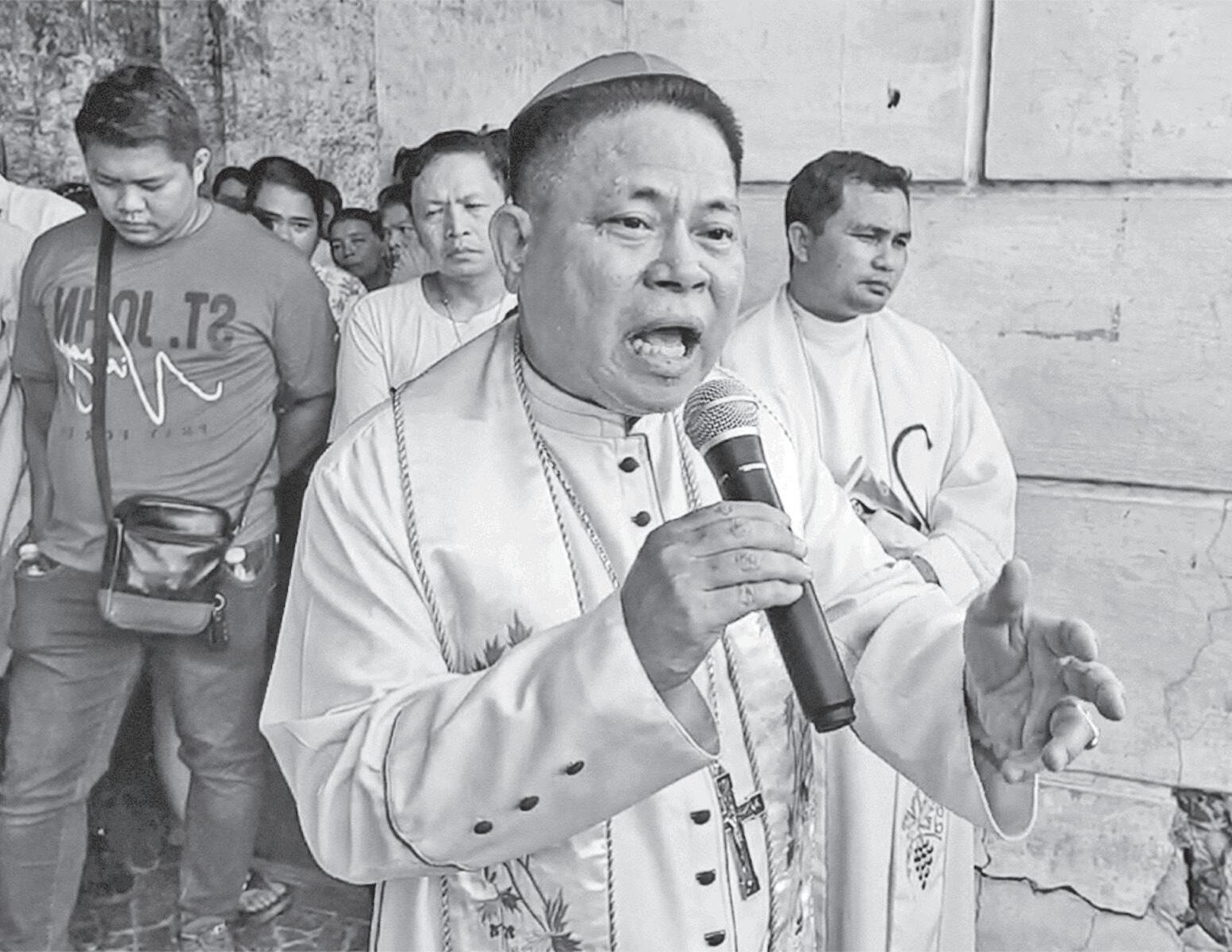
Hour of Adoration and a service for solemn confessions be held at 3 p.m. on August 7 to aid in the community’s spiritual healing.
He said the church’s reopening will depend on the faithful’s participation in the acts of penance and a pastoral assessment of the parish’s spiritual disposition.
The archbishop also issued a stern warning to the unidentified individual involved, calling the act “a grave sin and desecration” that carries ecclesiastical penalties and jeopardizes the person’s communion with God and the Church.
“Immediate confession and sincere repentance are required to restore one’s standing in the community of faith,” the archbishop added.
Jumoad also called for renewed reverence and spiritual commitment among the faithful.
“Sacred objects and places are vessels of God’s grace and deserve our utmost respect and reverence,” he said.
A television news report showed somebody with a woman’s voice, crying and in blurred-out face denying having spit on the holy water font. She, however, apologized.
The TV report showed a blurry image of a woman bending over the holy water font. CBCP News and BusinessMirror
Pope Leo XIV: The family is the first place we receive support to overcome life’s trials
VATICAN—In a video message to the participants of the third congress of the Pan-African Catholic Network for Theology and Pastoral Care, Pope Leo XIV recalled the fundamental role of the family, “the first place where we receive the love and support we need.”
The event, titled “Walking Together in Hope as the ChurchFamily of God in Africa,” took place from August 5 to 10 at the Catholic University of West Africa in Abidjan, Ivory Coast.
The main objective of the meeting is to promote communication within the global south by bringing together theologians, pastoral, lay, and religious leaders to reflect, share experiences, and develop pastoral ministry from an African perspective.
At the beginning of his message, released on August 6, the Holy Father particularly expressed his gratitude for the work of the meeting’s organizers and assured them of his prayers for the participants, who during these days are reflecting on the future of the Church in Africa.
In the context of the Jubilee of Hope, Pope Leo XIV emphasized
the vital role that hope plays in our earthly pilgrimage.
“Faith and theology provide the basis for knowing God, while charity is the life of love we enjoy with him,” he noted.
However, he explained that “it is by the virtue of hope that we desire to attain the fullness of this happiness in heaven. Thus, it inspires and sustains us to grow closer to God even when confronted by the hardships of life,” he added.
The pope urged the Church to be “a beacon of hope for the nations” facing various difficulties in Africa, while calling for fraternity and appealing to the responsibility to “look after each other.”
“A family is usually the first place where we receive the love and support we need to move forward and overcome the trials we face in life,” he pointed out. In this context, he encouraged the continued building of “the family of the local Churches” in African countries “so that there are networks of support available to all our brothers and sisters in Christ, and also to the wider society, especially those on the peripheries.”
Pope Leo XIV emphasized the importance of “recognizing the unity between theology and pastoral work.” Almudena Martínez-Bordiú/ Catholic News Agency via CBCP News
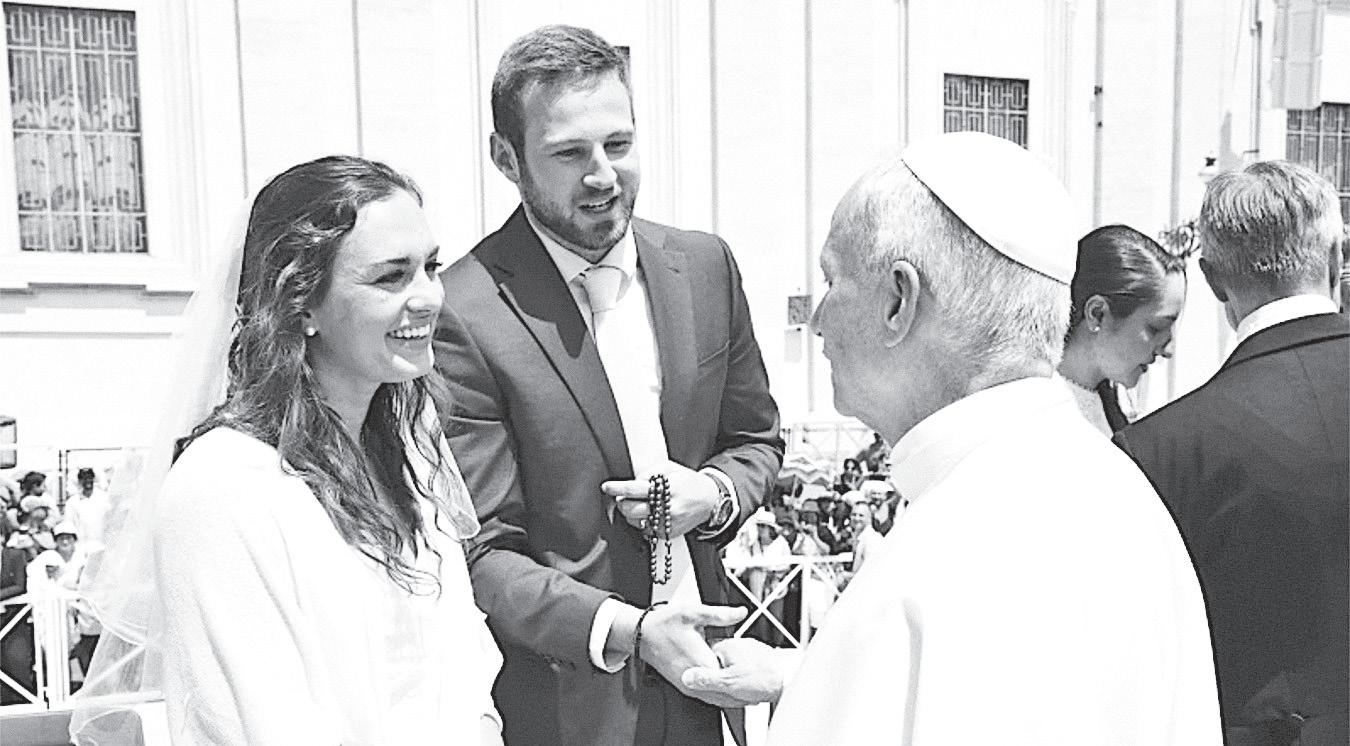

Asean Champions of Biodiversity Media Category 2014
Editor: Lyn Resurreccion

By Jonathan L. Mayuga
RESIDENT Ferdinand R. Mar -
Pcos Jr. recently signed into law Republic Act (RA) 12225 declaring a protected area in Nueva Valencia, Guimaras, as a national park to be called the Taklong and Tandog Group of Islands Natural Park (TTGINP), which was previously a component of National Integrated Protected Areas System (Nipas).
RA 12225 was one of three laws that established unique areas as protected areas.
The other law, RA 12226, declared Alibijaban Wilderness Area in San Andres, Quezon, also an initial component of Nipas, as a protected area under the category of protected landscape and seascape. It is called the Alibijaban Protected Landscape and Seascape.
Meanwhile, RA 12227 established the Mt. Masaraga Protected Landscape, a biodiversity-rich area in Polangui and Oas towns, as well as Ligao and Tabadco cities, Albay Protected Area, as protected area.
Designating protected areas will ensure the protection and conservation of these areas. More importantly, their management by various stakeholders will have to be coordinated— with the national government, local government units, concerned nongovernment organizations, private groups, and local communities.
A welcome news
THE Asean Centre for Biodiversity (ACB) welcomed the declaration of the three new protected areas in the Philippines.
Sought for comment on the designation of more legislated protected areas in the country, ACB Executive Director Jerome L. Montemayor said it strengthens the country’s status as one of the world’s megadiverse countries, with the Philippines being home to two-thirds of the world’s biodiversity and boasts a very high level of species endemism.
Montemayor told the BusinessMirror via email on July 28 that the
Philippines supports a remarkable diversity of terrestrial vertebrates, with 1,238 recorded species, half of which are endemic.
“The country hosts over 3,214 fish species in its marine and freshwater ecosystems, including approximately 121 endemic species and 76 that are currently threatened. The country ranks fifth in the number of plant species and fourth in bird endemism,” he said.
MONTEMAYOR , a forester, said the designation as a protected area—for the protection of the country’s natural wealth—calls for greater responsibility and accountability, especially since the Philippines is also a biodiversity hotspot due to various activities and threats that intensify pressure on resources that are already declining in number.
The Philippines has two landmark laws on protected areas—RA 7586, the Nipas Act of 1992, and RA 11038, the Expanded Nipas Act of 2018.
Community-based management
“THESE laws not only define the protected areas set aside because of their unique physical and biological significance, but also provide a legal framework for their protection and for decentralised and community-based management strategies,” he said.
The signing into law of RAs 12225, 12226, and 12227, declaring parcels of land in the provinces of Guimaras, Quezon, and Albay, respectively, brings the number of protected areas in the Philippines to 249.
Guided by the Kunming-Montreal Global Biodiversity Framework, the Asean Biodiversity Plan, and the Philippine National Biodiversity Strategy and Action Plan, national and local government agencies, nongovernment organisations, people’s organisations, the private sector, and especially local communities surrounding these protected areas can work together to implement and sustain an integrated approach to develop inclu -

sive and science-based initiatives for the conservation, management, and restoration of these protected areas.
Support from ACB
AS a technical and scientific cooperation support center selected by the Convention on Biological Diversity for the implementation of the global biodiversity framework in Asia, the ACB is committed to support its host country, the Philippines, and all Asean member states in the conservation, restoration, and effective management of protected areas.
This covers the region’s more than 2,600 protected areas, covering over 700,000 square kilometers of terrestrial and around 300,000 square kilometers of marine protected areas.
Asean’s flagship initiative, the Asean Heritage Parks Programme, showcases the best protected areas in the region and the best management and conservation efforts in these areas.
Another project, the Effectively Managing Networks of Marine Protected Areas in Large Marine Ecosystems in the Asean Region, aims to improve the management and governance of marine protected areas and their associated marine corridors in four large marine ecosystems in the Asean region.
This week, ACB is also launching a new regional conservation project called Enhancing Conservation and Restoration of Wetlands and Peatlands in Asean as Effective Sinks and
IPIL, Zamboanga Sibugay—A shared commitment to build inclusive growth and environmental stewardship brought together local government officials, development organizations, and social enterprise partners in a recent stakeholders’ meeting.
The event, organized by Peace and Equity Foundation, focused on supporting the coastal communities of Sibuguey Bay through conservation and sustainable livelihood initiatives.
One of the highlights of the event was the signing of “Bugsay sa Panaghiusa,” Cebuano for paddle of unity.
The symbolic pledge signified the group’s united support for 5,200 fisherfolk in Zamboanga Sibugay and the continued collaboration among key stakeholders.
The event featured a consultation workshop, where participants dis -
cussed ways to co-develop and scale programs for the next six years to protect the environment and boost the local economy.
In her remarks, Zamboanga Sibugay Gov. Dulce Ann Hofer praised the collective initiatives to uplift fisherfolk communities.
“This consultation workshop reflects the very heart of what we aim to achieve in Zamboanga Sibugay,” Hofer said.
Building a sustainable coastal transformation
AT the forefront of these efforts is the Kapunungan sa mga Gagmay ng Mangingisda Fishermen Cooperative (Kagmafico), the first province-wide fisherfolk cooperative. In partnership with the Provincial Environment and Natural Resources Office (PENRO), the Saving Marine and Aquatic Resources Through Teamwork-Sibugay Bay Development
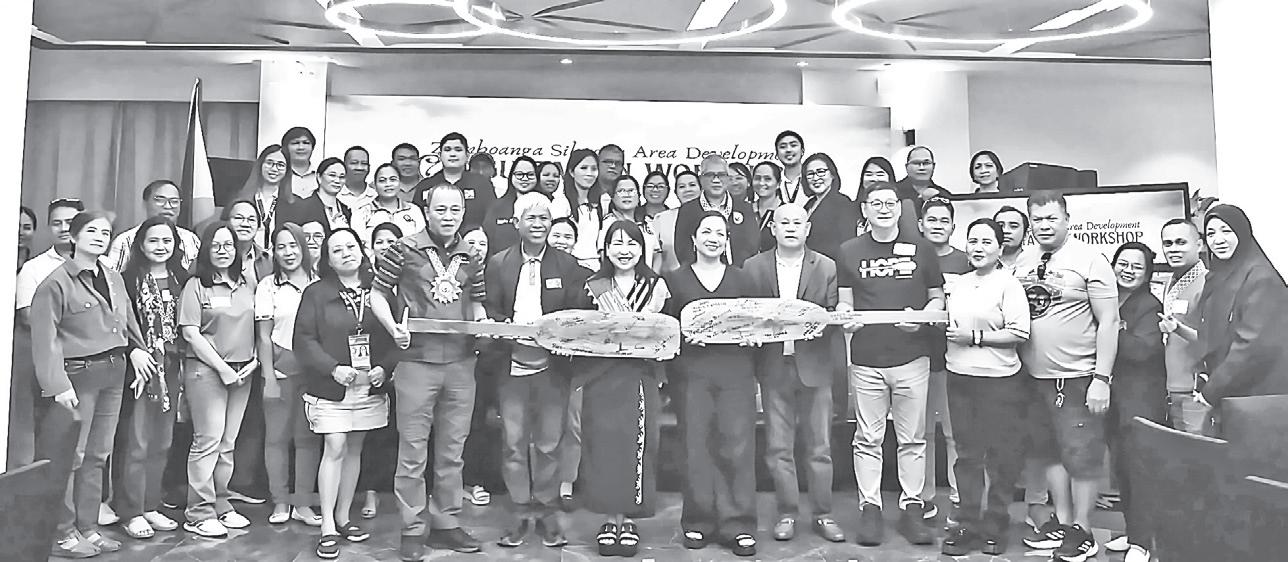
Alliance (Smart-SBDA), and PEF, Kagmafico is spearheading programs to enhance marine conservation and livelihood development.
Ongoing initiatives include mangrove reforestation and communityled Bantay-Dagat (sea patrols).
The cooperative is also working to consolidate 52 people’s organizations across the province into a coalition that can formally engage with the local government to expand livelihood support for fisherfolk.
“Kagmafico aims to break the cycle of poverty among fisherfolk and empower them to be good stewards of our marine resources. We believe it can be done through collaboration,” said
Roberto Ballon, Ramon Magsaysay Awardee and Kagmafico chairman.
PEF Board Member Martiniano Magdolot reaffirmed the Foundation’s commitment to help the cooperative grow in both leadership and enterprise development.
“PEF is looking forward to more meaningful collaboration with organizations toward a better future for the Sibugay fisherfolk,” he said.
ROBERTO BALLON (center), Ramon
Magsaysay Awardee and Kagmafico chairman, and the Zamboanga Sibugay stakeholders hold a meeting, led by Peace and Equity Foundation, to support coastal communities.
Reservoirs of Greenhouse Gases.
This project aims to create sciencebased and practical methods to protect carbon-rich ecosystems, such as wetlands and peatlands to protect biodiversity in the region.
“As we congratulate the Philippines on declaring these three new protected areas, we continue to urge everyone to take part in the strict compliance with the law,” Montemayor said.
“More than a filed document, this requires our collective action and shared commitment to ensuring that we can pass on these protected areas as our legacy to future generations of Asean,” he added.
Guimaras oil spill
FORMERLY known as Taklong Island National Marine Reserve (TINMR), TTGINP was once devastated by a massive oil spill that affected Guimaras and nearby areas in Panay Gulf.
The 2006 Guimaras Oil Spill occurred when an oil tanker, the MT Solar 1, sank off the coasts of Guimaras and Negros, causing what is considered as the worst oil spill in the country’s history.
In Guimaras alone, 20 coastal barangays were severely affected, and TINMR, which provides an important life-support system to the region, was choked by thick black oil for months.
Resilience, recovery capacity
FORTUNATELY, because of the area’s
rich biodiversity, TINMR has become resilient.
Experts attributed its capacity to recover to the remarkable expanse of mangroves covering the small islands and islets.
Interviewed via telephone on July 29, Rhett Arthur A. Diana, senior ecosystem management specialist and the chief Conservation and Development Section of the Department of Environment and Natural Resources (DENR) in Guimaras province, said TTGINP has now recovered from the impacts of the oil spill.
“Our fishers are now enjoying the bounty of the seas again, unlike when Guimaras was struck with the oil spill in 2006,” Diana, the designated Protected Area Superintendent of the TTGINP said partly in Filipino.
Unique and diverse
DIANA said the TTGINP hosts a complete range of coastal and marine ecosystems, including beach forests, mangrove forests, seagrass beds, and coral reef areas.
It serves as an important feeding and nesting ground for threatened marine turtles such as the green sea turtle (Chelonia mydas) and the hawksbill sea turtle (Eretmochelys imbricata).
The area also provides nesting sites for Philippine megapode, locally known as the tabon bird (Megapodius cumingii).
The protected area also supports diverse marine life, including various species of giant clams and high-value fish species.
It is likewise home to threatened reptiles such as the large-scale water monitor (Varanus salvator) and several snake species.
The beach and mangrove forests serve as roosting habitats for the common island flying fox (Pteropus hypomelanus) and the large flying fox (Pteropus vampyrus).
Help and support
DIANA said the protection and conservation of the area, even when it was just an initial component of Nipas, could also be attributed to the help and support of the local government officials of the province and the town of Nueva Valencia.
The declaration of the TTGINP under Republic Act 12225, Series of 2025, was championed by Ma. Lucille Nava, formerly Lone District Representative of Guimaras, with strong support from the municipal mayor of Nueva Valencia, the provincial governor, members of the Protected Area Management Board, and the DENR, he said.
DIANA also said the GIZ, or the German Agency For International Cooperation, a service provider in the field of international cooperation for sustainable development and international education work, helped a lot in boosting the status of the former TINMR. It was a recipient of funding support from GIZ’s Protected Area Management Enhancement Program and ProCoast Program.
“It was through these programs that the management plan and drafting of the protected area bill were made possible,” Diana added.
Ways forward WITH the declaration of the level-up category and status as a legislated protected area, the TTGINP, he said, will undergo a stricter management regime.
He said the area under strict protection has increased from 16.97 percent to 25.34 percent of the total park area.
“Moving forward, key priorities will include the protection and conservation of natural resources, promotion of citizen science, and the development of sustainable ecotourism as an additional source of income for local communities,” he said.
Notably, Diana said the endangered molave tree (Vitex parviflora) is well-distributed throughout the area, alongside bantigue (Pemphis acidula) in the mangrove zones. The rare mangrove hybrid species (Rhizophora × lamarckii) has also been recorded within the natural park.
WEST ZONE concessionaire Maynilad Water Services Inc. (Maynilad) has kicked off its 2025 “Plant for Life” program with the goal of planting 180,000 native trees across the Ipo and other critical watersheds this year.
The initiative highlights Maynilad’s commitment to long-term water security, biodiversity conservation, and climate resilience.
The program began with a large-scale planting at the Ipo Watershed in Norzagaray, Bulacan, which plays a crucial role in protecting the AngatIpo water system—the main raw water source for Metro Manila.
Volunteers from private sector partners, civil society groups, media organizations, and local communities joined Maynilad in the event, including representatives from the Metropolitan Waterworks and Sewerage System (MWSS) and sister companies within the MVP Group.
“Watershed reforestation is crucial to safeguarding the region’s water resources,” said Maynilad Chief Sustainability Officer Atty. Roel S. Espiritu.
“Trees improve water infiltration, prevent soil erosion, and reduce sedimentation in dams, ultimately ensuring water quality and supply reliability for our 10.5 million customers. Just as important, this program helps restore local biodiversity and creates sustainable livelihood opportunities for nearby communities,” Espiritu added.
Since its launch in 2007, Plant for Life has planted over 1.45 million trees across nearly 2,000 hectares, expanding beyond Ipo and La Mesa to include the Kaliwa watershed, mangrove belts
along Manila Bay, and areas near Laguna Lake.
To ensure high survival rates, Maynilad engages Dumagat community members and local groups as forest stewards.
The stakeholders handle nursery operations, monitoring, replanting, and forest protection under a structured three-year care program— providing both environmental and socio-economic benefits.
As a result, the program sustains 80 percent survival rate while helping improve livelihoods. Current reforested areas are estimated to sequester approximately 25,000 metric tons of carbon dioxide annually, contributing to climate mitigation and aligning with Maynilad’s broader sustainability, and environmental, social and governance goals goals.
Maynilad is the concessionaire of the MWSS for the West Zone of the Greater Manila Area, the cities of Cavite, Bacoor and Imus, and the municipalities of Kawit, Noveleta and Rosario, all in Cavite province. A VOLUNTEER plant a native tree at the Maynilad 2025 “Plant for Life” activity.
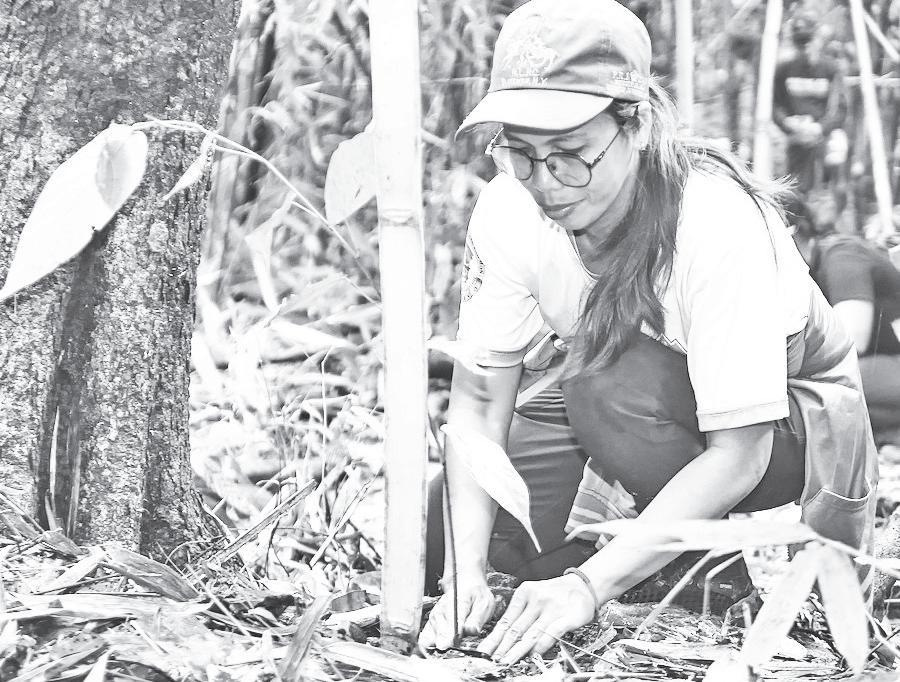

CARLO BIADO pulled off a masterstroke as he won the World Pool Championship for the second time and led Philippine aces to a roaring start to the second half of 2025.
Eight years after ruling the most prestigious 9-ball tournament on the planet, Biado reclaimed the summit with a smashing run in this year’s edition in Jeddah capped by a 15-13 dispatching of American Fedor Gorst in the thrilling finale.
The cue master known as “Black

THE Women’s National Basketball Association (WNBA) is still struggling with a string of sex-toy disturbances.
In the past week and a half, sex toys have been thrown on court during games in Atlanta on July 29, Chicago on August 1, Los Angeles on August 5 and Chicago again on Thursday night, with the most recent object hitting the court in the closing seconds of the Atlanta Dream›s victory over the Sky.
The sex toy that landed on the court in Los Angeles nearly hit Fever guard Sophie Cunningham during Indiana’s game against the Sparks.
Sex toys were also thrown at games in New York and Phoenix last Tuesday but didn’t reach the court and police say another toy was thrown at a game in Atlanta on August 1, although it’s unclear if that one reached the court.
The distractions have created unexpected challenges for the league, the teams and the players, but also for arena security. Here’s what to know. Are arrests being made?
A MAN was arrested Saturday in College Park, Georgia, after he was accused of throwing a sex toy onto the court during the Atlanta Dream’s July 29 matchup with the Golden State Valkyries, according to a police report.
The report said he threw another sex toy during the Dream’s August 1 game against the Phoenix Mercury, but that instance did not seem to result in a delay of play.
He is charged with disorderly conduct, criminal trespassing, public indecency and indecent exposure—all four charges are misdemeanors in the state of Georgia, meaning that if he is convicted, the punishment for each can
be a fine of up to $1,000 or jail time of up to 12 months.
A misdemeanor for public indecency and indecent exposure may also require registration on the state’s sex offender list.
The report said the man told police “this was supposed to be a joke and the joke [was] supposed to go viral.”’
Another man in Phoenix was arrested after police say he threw a sex toy in the crowd at a Mercury game on Tuesday.
Police say the 18-year-old pulled the sex toy from his sweater pocket and threw it toward seats in front of him, striking a spectator in the back.
The man later told police it was a prank that had been trending on social media and that he bought the toy a day earlier to take to the game.
He was later tackled by a volunteer at the arena who had witnessed the incident and began following him as the man tried to leave the arena.
Police say the man was arrested on suspicion of assault, disorderly conduct and publicly displaying explicit sexual material.
The New York Liberty told The Associated Press on Thursday night that there is an ongoing investigation into the throwing in New York and the team is cooperating with law enforcement.
What do arena security face?
THE types of sex toys being thrown onto the court generally do not include metal elements, meaning that arena metal detectors are not able to sense them.
When carried on a spectator’s body, they become even more difficult to detect.
Arena security teams face challenges in catching these items, according to Ty Richmond, the president of the event services division

at Allied Universal Security, a company that provides security services to certain NBA, WNBA, Natiobal Football League, Major League Baseball and Major League Soccer arenas across the country.
“Not all stadiums are using a screening process that’s consistent and can detect [the sex toys] because of what it would require—pat down searches, opening the bags, prohibiting bags,” he said. “The conflict of expediency, of getting fans into the arena and into the venue, which is an important issue, and security and safety.”
The limits of arena security make legal action one of the strongest deterrents for this kind of behavior, Richmond said.
“The decision to prosecute and show examples of how people are being handled is very important,” he said. “Without a doubt, I think it will make a difference. The application of it is important, and publicizing that is important.”
There have not been any arrests made yet for the in Los Angeles and Chicago. In a statement to the AP, the Sparks said they are “working with arena personnel to identify the individual responsible and ensure appropriate action is taken.”
The WNBA has said that any spectators throwing objects onto the court will face a minimum oneyear ban and prosecution from law enforcement. AP
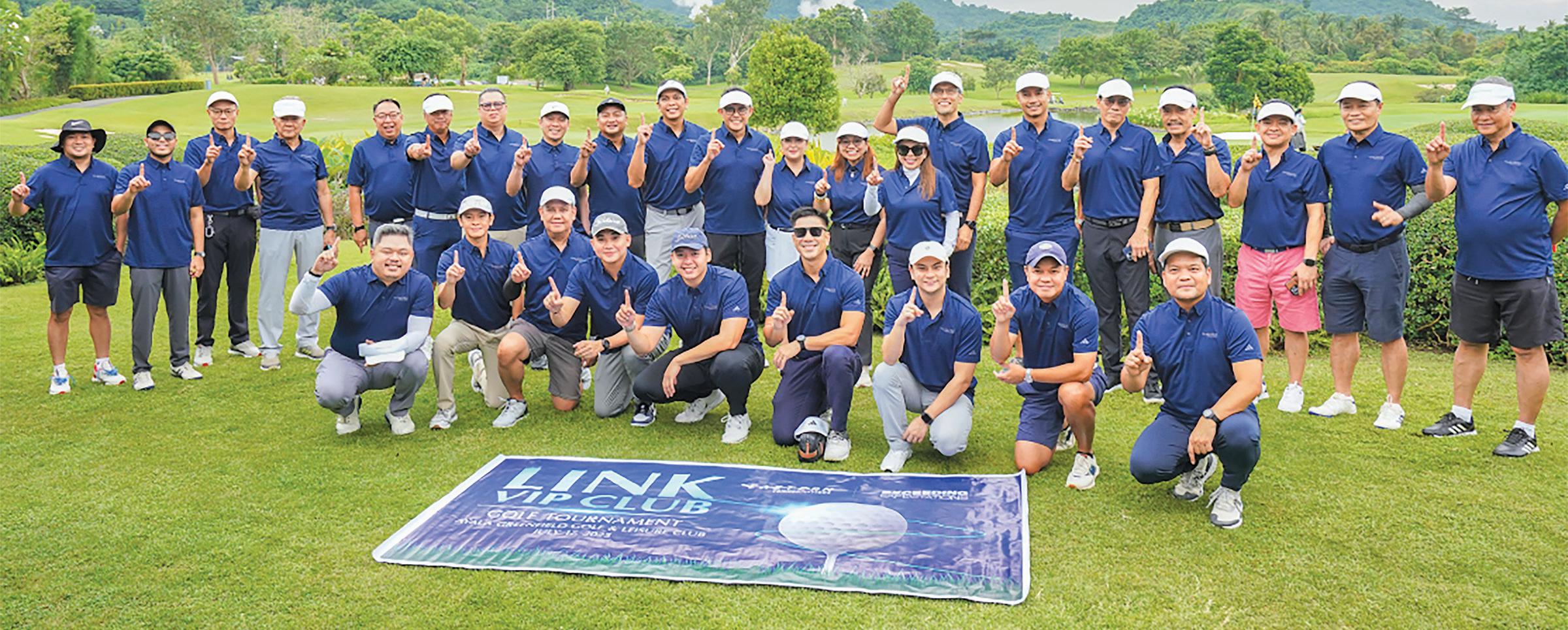
BEVERLY GAY ALARCON pulled off a remarkable performance at 51 years old by clinching six medals in foil, épée and sabre in the Navy Open Fencing Championships staged in the previous weekend in Bangkok.
Alarcon, competing under the banner of Ezkrima Fencing, sparkled in the mixed gender 50+ category where she competed against opponents as young as 16 years her junior and clinched a medal in each of the three disciplines.
She also competed in the Veterans 35+ Women’s category and went on to win gold medals in foil and épée (50+), silvers in foil (50+ and 35+) and bronze in épée (35+).
“At 51, as a Filipina, I wanted to prove that age and womanhood are not limits— they are strengths,” Alarcon shared. “I fought men in the mixed pools. I faced younger women in the 35+ division.”
“I competed in six events across
three weapons. It was exhausting, but I gave it my all,” she said. “This was more than a tournament—it was personal growth, a moment of empowerment and an honor to represent the Philippines on the world stage.”
Her husband, Rodolfo Alarcon Jr., reaped three medals of his own—silver in Veterans 50 sabre and bronzes in Veterans 50 foil and Veterans 40 sabre.
Their student, Ferdinand Barroquillo Jr., earned a Blue Medal by finishing in the top seven in Veterans Men’s Sabre 40+.
Beverly Alarcon’s 16-year-old son Jacob Lucas Alarcon placed 44th out of 80 entries in the highly competitive Senior Men’s Sabre category.
Ezkrima of the Alarcon family— fencing out of Carmona in Cavite— were joined in the competition by veteran Ferdinand Barroquilo Jr., 40, and ranked 16th out of 22 teams in the Senior Men’s Team Sabre event.

“Bartlett


AUGUST 10, 2025 | soundstrip.businessmirror@gmail.com
Bey Pascua finds her own beat
TStory by Justine Xyrah Garcia
here are days when the weight of expectation feels louder than the music itself.
For Bey Pascua, the pressure didn’t come after success. It came before it. Long before she led major concerts under Live Nation Philippines, she was already known—as the daughter of Rhiza Pascua, the woman behind some of the country’s biggest shows.
And with that name came assumptions, comparisons, and a quiet demand to measure up.
She’s aware of all of it. And she’s careful not to let it define her.
At 25, Bey is part of the next generation shaping the country’s live events industry. She has served as project lead for J-Hope’s solo concert and Olivia Rodrigo’s sold-out Manila show.
But her biggest work, perhaps, is internal: learning how to lead without losing herself in the shadow she was born into.
“I think for the most part, I’m always… when people hear my name, I think they immediately

Publisher :
T. Anthony C. Cabangon
Editor-In-Chief :
Lourdes M. Fernandez
Aldwin M. Tolosa
Concept :
Y2Z Editor :
SoundStrip Editor : Group Creative Director : Graphic Designers :
Jt Nisay
Edwin P. Sallan
Eduardo A. Davad
Niggel Figueroa
Chow Jarlego
Contributing Writers :
Tony M. Maghirang
Rick Olivares
Jill Tan Radovan
Reine Juvierre S. Alberto
John Eiron R. Francisco
Pocholo Concepcion
Francine Y. Medina
Justine Xyrah Garcia
Bea Rollo
Trixzy Leigh Bonotan
Bless Aubrey Ogerio
Photographers :
Bernard P. Testa
Nonie Reyes
Y2Z & SOUNDSTRIP are published and distributed free every Sunday by the Philippine Business Daily Mirror Publishing Inc. as a project of the
The Philippine Business Mirror Publishing, Inc., with offices on the 3rd Floor of Dominga Building III 2113 Chino Roces Avenue corner Dela Rosa Street, Makati City, Philippines. Tel. Nos. (Editorial) 817-9467; 813-0725.
Fax line: 813-7025
Advertising Sales: 893-2019; 817-1351,817-2807. Circulation: 893-1662; 814-0134 to 36. www.businessmirror.com.ph
think of maybe my family name, the people I’m associated with, or my title, or a combination of both. I definitely believe that who I am goes beyond that,” she told BusinessMirror’s SoundStrip.
It’s a quiet declaration, but one she’s had to return to often—especially when the work becomes too visible or too personal.
Born backstage
As a child, Bey often tagged along to her mother’s shows, observed how things worked behind the scenes, and learned the rhythm of production long before she officially stepped into it.
She formally joined the company in 2019, just after graduating from college.
Since then, she’s been involved in nearly every layer of concert production—from artist coordination and technical logistics, to working with international teams and ensuring that the local rollout matches global expectations.
That work is rarely glamorous. It involves backto-back calls with artist management, last-minute tech adjustments, budget tracking, and dozens of decisions that don’t make it to the stage—but determine whether the show happens at all.
“That’s when I actually started to understand just how difficult and how layered my mom’s job really is,” she admitted. “And the fact that she started that from the ground up inspired me in a way where I was like, she built this from nothing, so it only makes me want to make her proud by continuing to build on that and make it meaningful not just for her, but for all the other people who attend our shows or all of our team that put in all of the hard work.”
In an industry where results are public but processes are not, it’s easy to overlook what it takes to put a show together.
But for Bey, those backstage moments— when teams come together, when plans finally align—are just as fulfilling as the crowd’s cheers.


“I think a lot of that passion is what made me want to continue working here, and that’s why I love it so much. So I’m grateful that I not only get to be a part of these big concerts, but I’m even more grateful that it’s something that I love doing,” she said.
Grace under pressure
Even with experience, the work doesn’t get easier. And often, it comes with scrutiny.
What the public often sees—a successful show, a trending fan cam, a viral crowd moment— rarely captures the messiness behind it.
When things go wrong, and sometimes they do, the blame doesn’t always land fairly. Local promoters are often held responsible for issues beyond their control.
“They have no idea what’s going on beyond the scenes,” Bey said.
“Everything that we can say has to go through management, has to go through the artist team… so automatically people assume, oh, since you guys are the ones that are doing the show here in the Philippines, it’s your fault,” she added.
From these experiences, she learned that doing the job well isn’t just about handling logistics—it also means learning how to absorb public reaction without letting it derail the work.
It’s not easy, especially in an industry where criticism often comes fast and without full context.
“I think being in this job, you really need to have tough skin, especially with the feedback that you get from attendees or fans of artists,” Bey said. “It’s hard to be able to separate your emotions when all you see online is insults to you personally, or my mom personally, and of course that affects me because, you know, it’s not us as people, it’s just our work, so I think that’s something that I’ve had to learn how to separate.”
Part of that toughness, for her, means creating systems of grounding. In every project, she returns to a few core values: curiosity, discipline, and resilience.
These are what help her stay focused—even when the noise gets loud, or the timeline gets tight.
She also believes that the way her generation approaches work deserves more understanding. For Bey, Gen Z’s work ethic isn’t about doing less—it’s about doing things differently.
“We actually redefine what work ethics

are by adding things like passion, and purpose, and well-being. It’s also about doing work that matters and making sure that we’re doing that sustainably,” she shared.
Artistry as anchor
Beyond the concert arena, Bey is also carving her space as a creative.
She is currently under GMA Artist Center’s Sparkle and most recently starred in Be Cool—a travel show alongside Korean actor Kim Ji Soo and internet personality Sassa Gurl, where they explored various parts of Albay.
“It was super nice to be able to explore places that people don’t really talk about,” she says. “I think Bicol is one of the most underrated parts of the Philippines… I’m sure there are other places that people haven’t explored yet or heard about.”
She also lent her voice to the official soundtrack of Unbreak My Heart—the first ABSCBN and GMA collaboration series.
For Bey, music and performance are not distractions from her work behind the scenes— they’re extensions of it.
Ways to stay creative, grounded, and connected to the energy that first drew her to the industry.
She’s been exploring content creation as well. While she once hesitated to post out of anxiety, she’s grown more comfortable sharing snippets of her life.
She’s also expressed interest in launching a podcast, something that would allow her to talk more openly about the complexities of navigating career, identity, and growth in such a public-facing space.
Through it all, she continues to unlearn the need to prove herself constantly—or to match anyone else’s pace. She’s also learning to separate ambition from comparison, and pressure from purpose.
That’s why, if there’s anything she wants her generation to hold onto, it’s the freedom to explore.
“If it’s something that you love to do, and if it’s always been something that’s on your mind, I think you should give it a shot. And if it doesn’t work out, maybe you can still continue to try. And if you still don’t like it, then you can quit it. But at least you won’t have any regrets,” she advised.
Story and photos by Ana Zoe V. Davad
Agentle piano motif threaded through the arena. With a single note, we were brought back to the snow-covered streets of Goblin and the bittersweet silences of Queen of Tears. The massive tri-panel LED screens flickered to life with montage clips of slow-motion reunions, tear-streaked confession scenes, lovers running through rain-slick streets.
On the humid evening of August 6, 2025, thousands of fans poured into the SM Mall of Asia Arena for the Korean OST Concert (KOSTCON) 2025, their LED wristbands pulsing like constellations. Manila is the concert’s second stop, with other stops including Dubai, Jakarta, Bangkok, and Malaysia.
Singer-songwriter Lee Mujin, most famous for his talk show and live music program LeeMujin Stage, strode onstage into a rosy, cotton candy pink spotlight, and the evening began in earnest. The high notes of his first song, “Ordinary Confession,” instantly evoked fluttering hearts —the shy glances in hallways and late-night text messages that define new romance.
Between songs, Lee thanked all K-drama fans in the audience. Via a translator, he said, “I’m not really a ballad singer, so this is something fun and happy. But I also picked OSTs that everybody would know.” His next number, “Rain and You” from Hospital Playlist 2, echoed off the arena’s curved ceiling as LEDs shifted to a misty blue.
After a brief highlight reel of the rom-com drama Business Proposal was shown on the big screens, Lee segued into “Sweet”, part of the drama’s upbeat OST. He closed with his signature song, the fluffy and sentimental “Episode.”
When K-R&B soloist Heize’s name appeared on the screens in jagged white letters, a ripple of applause swept through the crowd. Opening with “Can You See My Heart” from Hotel del Luna, her honey-smoky vocals glided over dramatic swells. Each note felt like a raindrop pattering on glass— sharp, clear, and aching.
“Namiss ko kayo, sobra,” she said in Filipino while looking out at the sea of faces. After spotting a fan holding a handmade banner, Heize beckoned her forward and presented her with a single sunflower – an unexpectedly sweet moment. She finished her segment with a tearjerking rendition of “Hold Me Back” from Queen of Tears.
Under a silvery wash of light, veteran soloist Soyou appeared in an all-black ensemble, her presence ethereal. Through the translator, she greeted, “Ang bilis ng pagkakabalik ko sa Pilipinas; I was in the Philippines last year, but I’m very happy to see you all again.” Cheers erupted.
She dove into “Good To Be With You” from When the Camellia Blooms, each sustained note giving voice to a patient, steadfast devotion that blossoms like the camellia itself. During the audience interaction segment, Soyou revealed that even Korean fans haven’t heard this song live, making it an exclusive performance for KOSTCON.
Expectations were sky-high when Chen, vocalist of EXO and OST royalty, took the stage. As the first notes of “Fall in Love Again” played, his crystalline vibrato cut through the arena. He paused between verses, beaming, “A lot of you were singing along with me. Thank you. I felt na hinihintay talaga ako.” (via translator)
His setlist showcased both power and tenderness: the yearning ballad “Best Luck” from It’s Okay, That’s Love had the audience swaying in unison, cell-phone lights illuminating the darkness like fireflies.
Then came “Make It Count,” a more upbeat track from Touch Your Heart, its driving rhythm section underscoring a message of seizing every moment while you still can. Before departing, Chen leaned into the mic and promised, “May my heart touch all of your hearts.” He then bounded onto the extended catwalk, interacting with the crowd up close.
When soloist K.Will’s intro video played— montage clips from Descendants of the Sun and She Was Pretty—the applause reached a fever pitch. It was his first time in the Philippines, and he made it count.
He launched into “Love Blossom,” its gentle guitar vocals charting the slow unfurling of affection. Next, “All I Have Is My Heart,” a soaring ballad from Ghost Doctor, brought tears to more than a few eyes. Then came the definitive “Beautiful Moment” from Descendants of the Sun, his voice riding a cascade of synth strings. He wrapped up with “Please Don’t”—a plea coated in velvet vocals—and sent flying kisses toward the audience as he left the stage.
When Kim Bum-soo’s opening note hit—a trembling, sustained high C in “Journey” —the arena fell silent, then exploded in cheers. His dynamic range and impeccable control cemented his title as the “King of High Notes”; the seasoned vocalist recently celebrated the 25th anniversary of his debut in 2024.
Before the second song, he admitted—via translator—“I was worried if many of you would know my songs, but from Jakarta to PH, I saw na mas maraming sumusunod na pagkanta, and I feel grateful for this experience. Salamat po.” The sincerity in his eyes made “I Miss You” from Stairway to Heaven all the more poignant; fans clutched each other, voices uniting in the haunting pre-chorus. He closed with “Last Love”, each phrase a gentle farewell, wrapping the segment in bittersweet closure.




in the air like a memory


caught every spotlight. She performed “My Destiny” from My Love from the Star, her crystalline vowels weaving through the arena like stardust. Her vocal runs turned simple refrains into soaring crescendos; at the chorus’s peak, the entire arena sang along, as if breathing and exhaling as one.
Yet, with near-constant intensity and minimal intermissions, the concert’s emotional richness proved both blessing and challenge. Like savoring your favorite decadent dish for three straight hours, the unbroken immersion could overwhelm. Bleary eyes need a moment to refocus, wavering voices need to hydrate.
But perhaps that relentless flow was precisely the point: to live the drama without pause, to embrace every heartbeat. Every lyric carried the emotional weight of the dramas themselves.

For the final act before the encore, the Queen of OSTs LYn
that
In the arena’s charged atmosphere, fans collectively re-experienced iconic storylines from the innocence of first love to the ache of separation, from the triumph of reunion to the promise of tomorrow. Through our K-drama binges, music is the soul of the story. It’s the pulse beneath every plot twist, the echo of every embrace.
By Nicky Andrews The Associated Press
FROM Juicy Couture sweat sets and lowrise, bedazzled jeans to chunky belts and baby tees, early 2000s fashion is all the rage again. That potentially makes that old box of clothes in the back of your closet a sitting cash cow.
Generation Z—born from about 1997 to 2012—has taken to the Y2K aesthetic that many millennials cringe at. Fashionforward college students and TikTok influencers are flaunting the miniskirts, chunky sandals and other bright, brand-heavy and borderline tacky items they likely bought secondhand.
Jackson Mangum, a 24-year-old tailor in Eugene, Oregon, said that while he has distanced himself from Y2K and found his own personal style, his wardrobe still has influences of it, including baggy camo shorts, flared jeans and big, funky sunglasses.
“I’m usually not Y2K but I appreciate Y2K style. I think it’s cool,” said Mangum, who showcases his work on his Instagram account, @wornandtornattire.
“The baggy jeans, different pops of pink and the chrome shades—it’s easy to go anywhere and be able to find things that fit into that niche. Throwing it together is easier than throwing together a full vintage outfit.”
Boomers emptying their millennials’ closets
ONE reason for the Y2K resurgence is a 20year cycle often seen in fashion history, experts say. (Y2K is short for the year 2000.)
“Prior to Y2K styles being back, we saw a lot of ’90s styles being back,” New York City-based fashion historian Emma McClendon said.
Lauren Downing Peters, an associate professor of fashion studies at Columbia College Chicago, said the Y2K resurgence could be a result of boomers downsizing their homes and purging their millennial children’s old belongings.
“The 20-year duration is just long enough for a younger generation to be able


to find the fashions of their parents’ generation, something that they can remember but only in the abstract, as quaint or interesting and kind of available for reinterpretation and adoption in their 20s,” she said.
The 2000s and the 2020s have a lot in common
IN addition, both experts drew parallels between the political and social dynamics of the two decades, such as technology booms and catastrophic events.
“At the start of the 2000s we had 9/11, we had a restructuring of how people thought about the world, how people thought about themselves, how people thought about politics,” McClendon said. “I think the global pandemic can be a really interesting comparative to that restructuring.”
The growth of the internet and social media in the 2000s mirrors the development of artificial intelligence today, she
said. At the same time, the 2000s may represent a time relatively free of social media and interconnectivity, which could appeal to Gen Z, who have grown up in the age of the internet.
“That is kind of the appeal behind vintage-inspired fashion trends—this idea that things were better back then,” she said.
So, what can you get for that old pair of jeans?
JOCELYN BROWN, who owns the online resale shop Arkival Storehouse, earns a living off this nostalgia by purchasing vintage clothes from thrift stores and antique malls, upcycling them and reselling them online.
Anyone trying to turn a profit on old clothes, she said, can use online channels and apps like Depop, Poshmark, ThredUp, TikTok and Instagram to sell and trade. Brown also suggests selling at flea markets. She advises sellers to cater to the

audience buying.
“People really like when something is curated and it feels like an experience,” said Brown, who lives in Chicago. “I’m really specific about what I put on my racks, and I may have more than what I bring... or I separate it out into different collections.”
Resale stores are another option. Nell Tercek, an assistant manager at Apocalypse, a resale shop in Boulder, Colorado, said about 75 percent of the inventory the store buys is Y2K.
Staff specifically watch out for micro miniskirts, vintage Victoria Secret lingerie tanks and baby tees, she said. For every item bought, the seller receives either 30 percent cash or 50 percent store credit of the resale price.
“Y2K style is really flashy and very exciting and visually enticing,” Tercek said. “Physical expression is really important right now due to the circumstances of the world. People are wanting to show who they are authentically and be able to experiment with clothing.”
Downing Peters sees “logo-mania and the resurgence of a lot of these cherished Y2K brands. Like, much to my horror, I’m seeing students wearing Von Dutch again and True Religion jeans, brands that I cared a lot about when I was younger.”
The Earth-friendly appeal of buying used
THE sustainable nature of buying secondhand also appeals to consumers, the experts said.
Gen Z has “this awareness of fashion sustainability and the ills of mainstream mass fashion, and the idea that you can shop responsibly by shopping secondhand without sacrificing style and individuality,” Downing Peters said.
Brown said she is sometimes hesitant to resell Y2K-era clothing because some was made poorly durjng the industry’s fastfashion economics then. However, she emphasized, Y2K-era denim is much higher quality that current-day denim, making it more valuable.
Looking ahead, Brown believes Y2K pieces will remain in consumer’s closets but will be styled in a more individualized way.
“People will take bits and pieces of Y2K style with them and add it to just their overall style,” she said.
As for what comes next? McClendon says 2010s style could be on the horizon, so hold on to those infinity scarves, skinny jeans or combat boots you may have tucked away.
n Cover photo by Sherman Trotz on Pexels.com